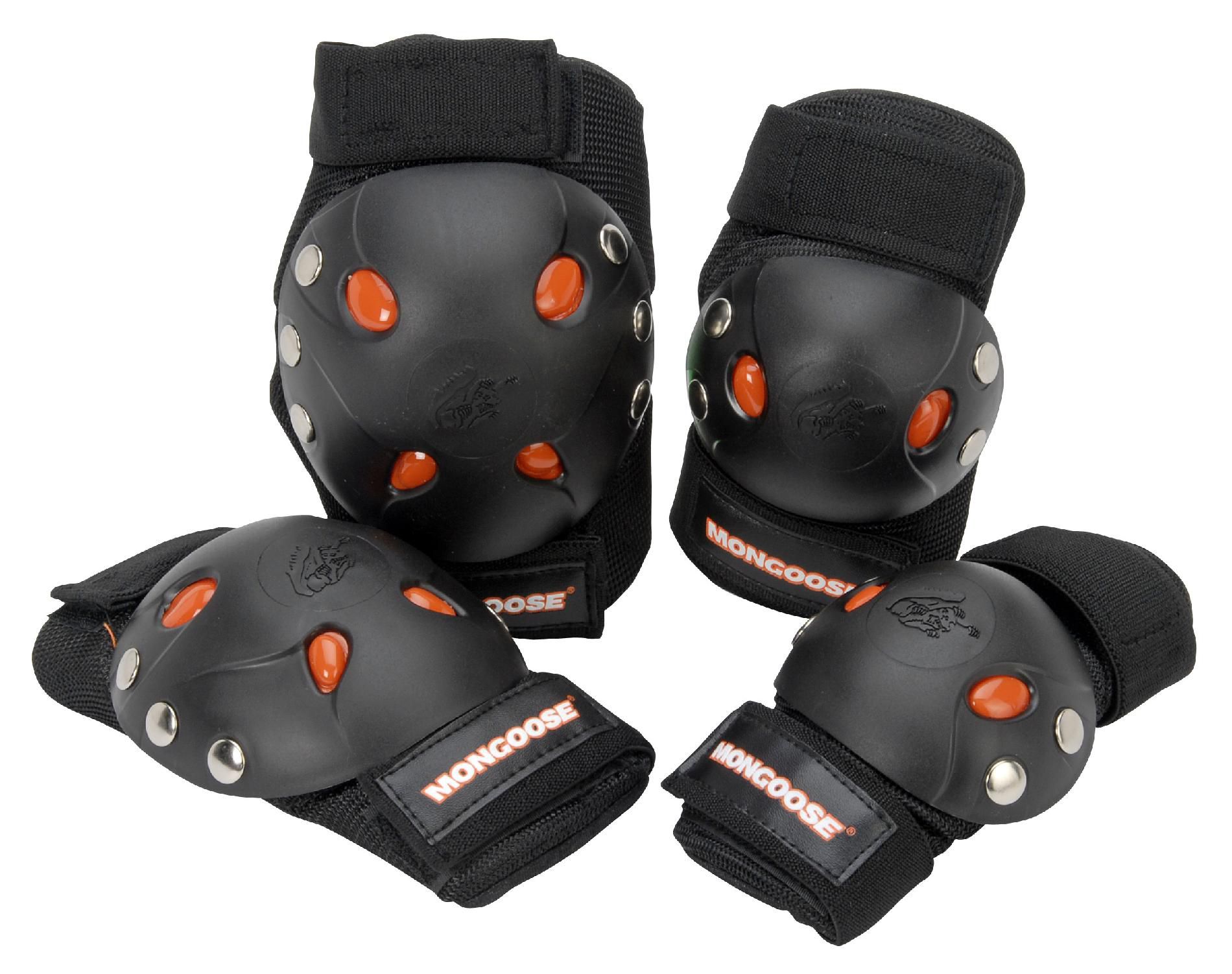What are knee pads?
Anybody who have injured their knees at least one time in their lives knows how painful and uncomfortable these types of injuries can be. Luckily there are an invention called knee pads that can help in the case of these types of injuries. Knee pads are pads that serve as a protective measure to help preventing you from injuring your knee or otherwise damaging it. Basically they guard your knees so that if you fall, receive a blow to your knees or just simply twist your knee in the wrong way the damage to your knee is smaller and you can live happy, knee pain free life for longer. Knee pads are so great because they are specially made so that they are able to absorb a significant amount of shock lessening the stress that your knees get and therefore making the effects of the injury less severe. Knees are one of the most important parts of our body even if we don’t realize it because they are what supports our body weight and allows us to move around. So by protecting your knees you protect your ability to comfortably walk, run, jump and even sit down or stand back up. A study by the American Journal of Epidemiology even says that wearing knee pads decreases the chance of injury by more than a half so wear knee pads whenever you know that there might be a chance of you injuring your knees and make sure that they stay healthy and injury free.
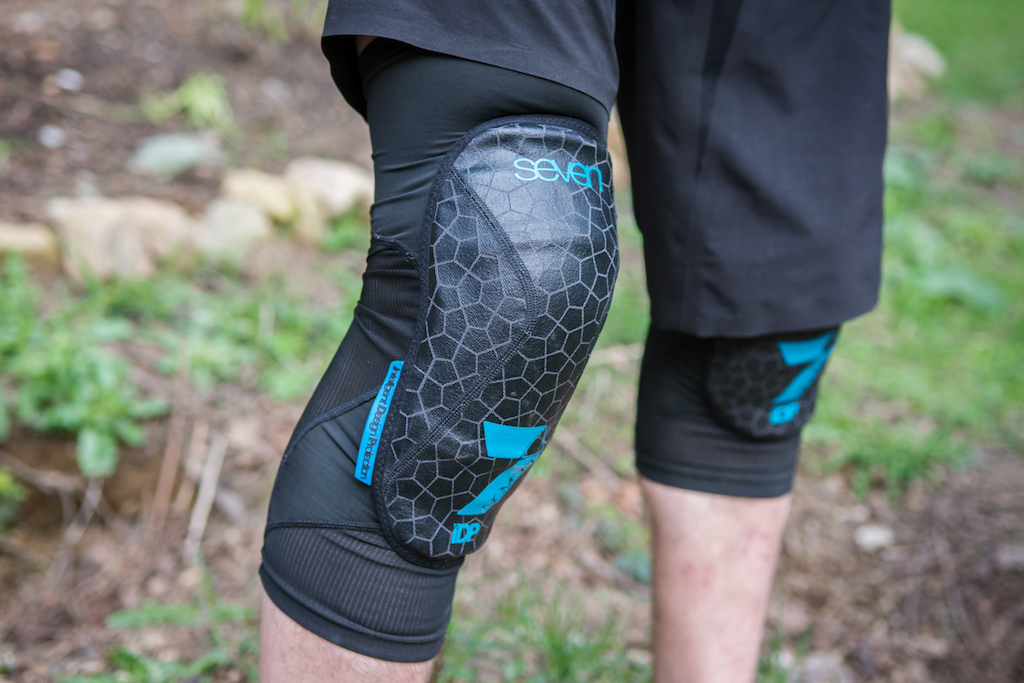
Where are they used?
There are many different fields and jobs where you can use knee pads. Most commonly knee pads are used as preventive measure by athletes of different disciplines because anyone from volleyball to basketball, soccer and football players use knee pads to protect their knees from injury or to lessen the effect of the injury. And athletes that compete in more extreme disciplines such as BMX, skateboarding, snowboarding and mountain biking, too, are fans of wearing knee pads to prevent injury and serious damage to their knees. As well as anyone who competes in equestrian disciplines know the value of good and sturdy knee pads. But knee pads aren’t meant only for athletes because they also are used by construction workers or workers of other similar occupations where they have to spend a lot of time crawling on their knees for example laying flooring. They use the knee pads not only to prevent bruised knees but also to lessen the chance for arthritis to develop which is usually caused by repeated activities over long period of time. And you can even use knee pads when you are cleaning your house, gardening or doing other chores around the house because knee pads will assure that your knees won’t suffer damage and will be healthier for a longer time.
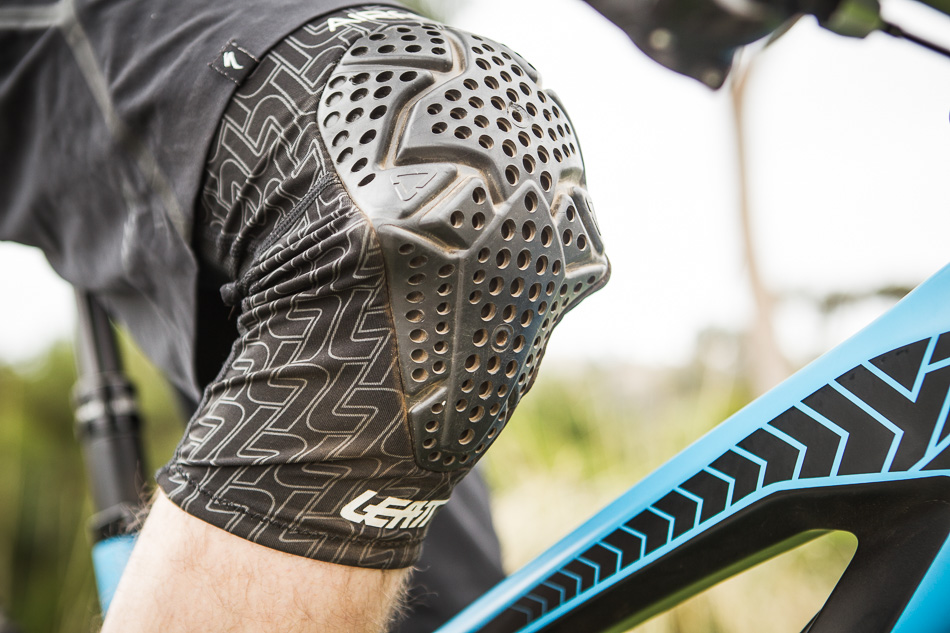
Knee pad types
Nowadays manufacturers offer a lot of different knee pads which are meant for various purposes, for example, for sports, dancing, acrobatics, work or military. All of these knee pads have to provide not only their primary functions, for example, protection and support, but such specific properties as comfort, flexibility, breathability, lightness and stylishness as well.
Knee pads are intended for knee protection against different injuries, for example, bumps, bruises, abrasions and wounds, but, considering the fact, that protection is not the only required feature of knee pads, manufacturers have to invent the way, how to combine protection with other necessary features.
One of such attempts is usage of different materials which could provide the maximum of required features. Sleeves or straps of knee pads can be made of various materials, for example, cotton, neoprene, spandex, nylon, polyester and others. Also padding can be made of such materials as PU, PE, EVA, PVC or XPS foam, nylon or neoprene foam, rubber, plastic, carbon fiber or other durable and high density material. Not only material, but also type of padding is important – it may be seamless, with grooves or made of hexagon type or bubble type pads.
Knee pads differ from each other with closures – if they are sleeve type knee pads, they may have no closures, but if they are adjustable knee pads, they may have Velcro closures for wrapping or adjustable straps with Velcro or buckle closures. We all know traditional knee pads which are fixed on knees with sleeves, Velcro closures or straps, but there are other types of knee pads too – kneeling pads, rolling knee pads and knee inserts.
As mentioned before, knee pads are intended for different purposes, therefore, they all differ from each other with functionality and level of protection, for example, knee pads for sports and dancing are more comfortable and flexible, but knee pads for work and military are thicker, denser and more durable.
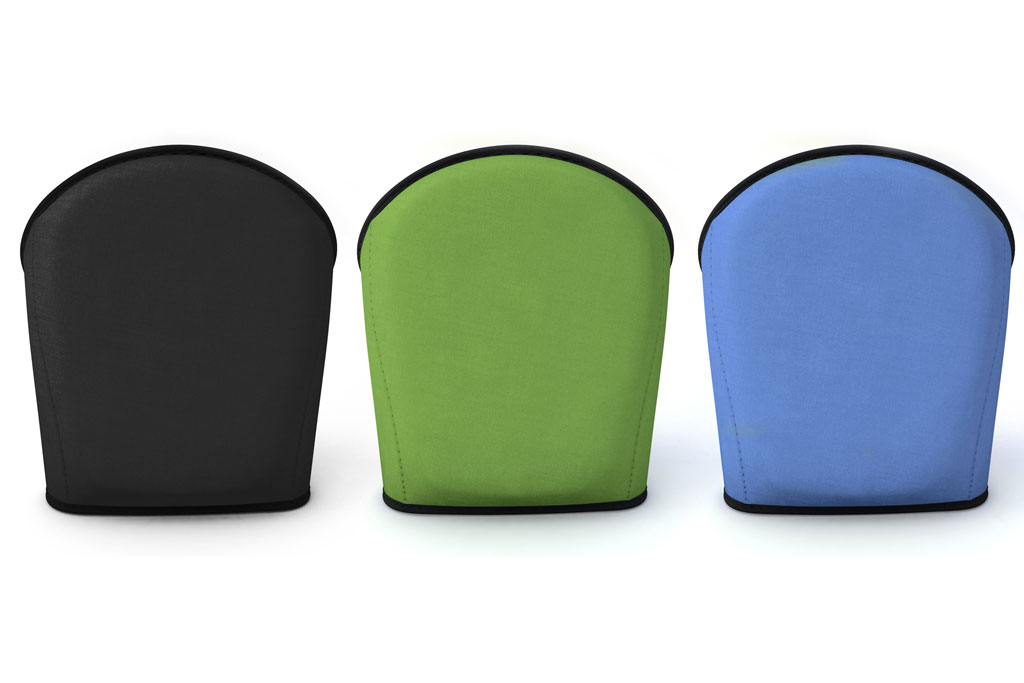
Knee pad materials
Similarly how there are so many different applications for knee pads because a lot of knee pads are versatile and can be used for multiple different things there are also a lot of different materials that manufacturers utilize to make their knee pads. But there are a few stand out materials that are used by multiple manufacturers because they attach some great qualities and features to the knee pads. Common materials used to make the outside layer of the knee pads are polyester, neoprene as well as elastane also know as spandex, leather and cotton because basically all of these materials are very durable but at the same time provide breathability and comfort to the wearer. Talking about the outside of the knee pads there are a range of heavy duty knee pads that have a hard shell attached on the very outside of the knee pads that provide protection against things like falls on the asphalt and that are especially useful to extreme sport athletes. These hard shells usually are made from plastic but sometimes metal too is used in production of these details of the knee pads. And lastly there are various materials that are used to make the shock absorbing padding of the knee pads that is probably the most important part of the pads. Common material here is polyurethane that is synthetic foam like material however lately it has been replaces by a gel like material because gel not only is better at shock absorption but also is more elastic diving the wearer better range of motion but still protecting the knee in case of a fall or trauma.
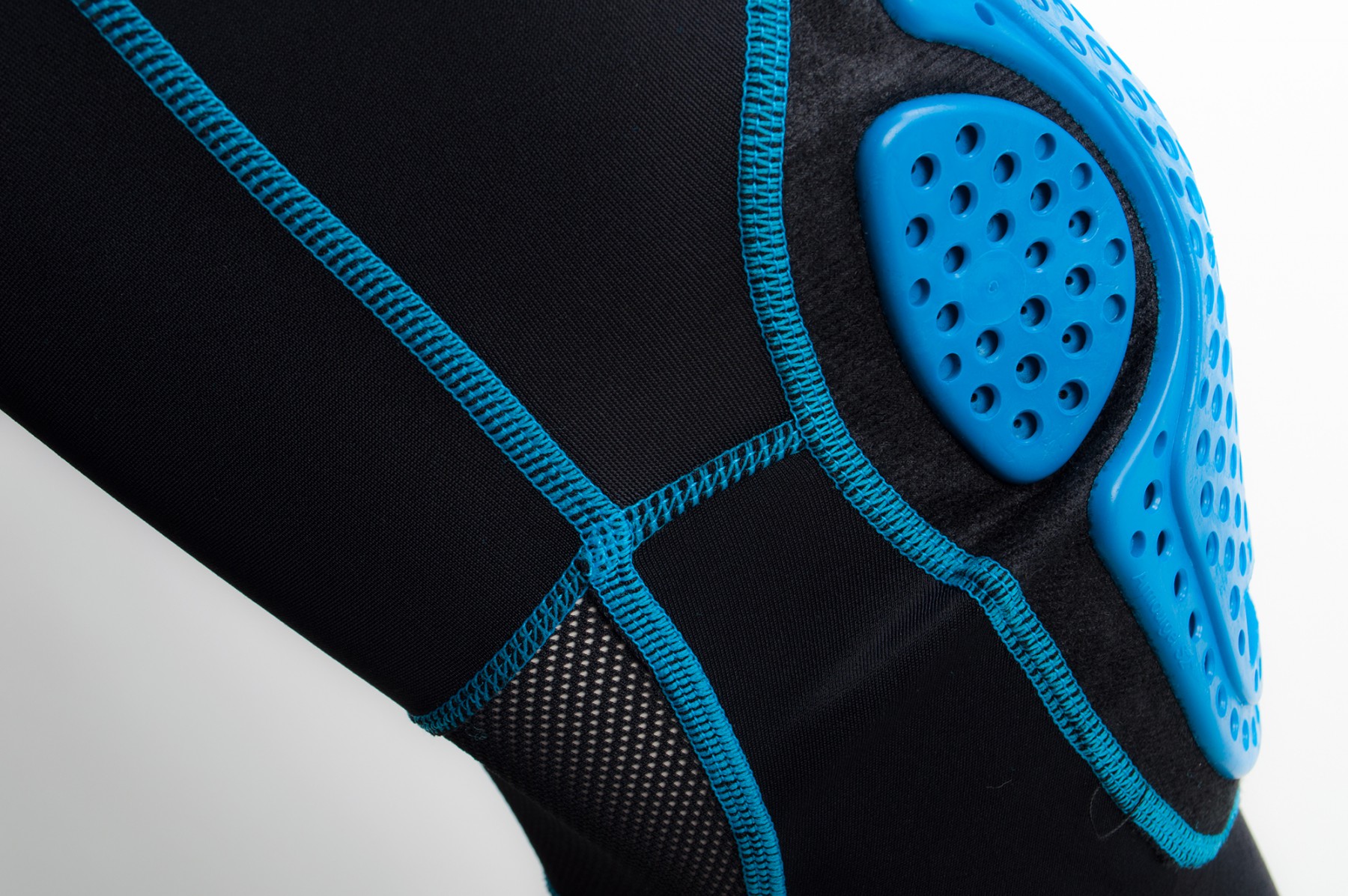
Knee pad usage in sports
Knee protectors such as pads, sleeves and braces are widely used in sports which is connected with a lot of different injuries, including knee damages. Many researches have proved that knee joints are the most injured body part among athletes, therefore, it is not a surprise that knee protectors are so popular and demanded among sportsmen.
Thanks to consumers demand there are many different knee protectors available – knee pads, knee sleeves and knee braces, and all of them are adapted to specific needs and wants in each sports. For example, knee protectors for extreme sports and knee protectors for regular sports differ from each other with durability and flexibility, because extreme sport requires extra protection against severe injuries, but regular sport requires mobility for superior performance. Also volleyball knee pads and basketball knee pads differ from each other, because volleyball requires thicker padding, but basketball requires larger coverage of protection.
Knee pads, knee sleeves and knee braces have their own functions. Knee pads are used for knee protection in order to avoid different knee injuries such as bruises and abrasions which are usually caused by direct blows or attrition, therefore, they are commonly used in extreme sports such as motocross, BMX and skateboard, and in contact sports such as volleyball, basketball, football, hockey and wresting.
Knee sleeves are used for knee protection to prevent knee injuries such as muscle pulls or fatigue, therefore, they are generally used in sports such as basketball, tennis, weightlifting, running, walking and other sports which are connected with great pressure on knee joints.
Knee braces are used for protection of previous knee injuries to avoid further endangerment, therefore, they can be used in any sports and in every situation, when protection of injured knee is needed.

Knee pad usage in medicine
Knee pads are used not only for protective purposes, but also for medical purposes – knee supports such as pads, sleeves, braces and straps are used not only for knee protection against different injuries, but also for recovery after knee injury or for facilitating various knee diseases or disorders.
Each of knee support is used in certain cases, for example, knee sleeves are recommended for reducing of swelling and treating of patellofemoral pain, because they ensure compression, warmth and support.
Usage of knee pads can prevent various knee injuries which are caused by outer impacts, but at the same time they can prevent a formation of bursitis and occupational diseases as well.
PTO (patellar tracking orthosis) braces stabilize the leg, reduce the pressure on knee joint and limit movement of the patella, reducing possibility of its dislocation or immobility, therefore, they are recommended for treating of arthritis, for reducing of patellofemoral pain and in cases of improper tracking of patella.
Hinged braces enhance stability of injured leg by supporting knee ligaments to relieve knee pain and discomfort, but they can be used for prevention of knee injury during contact sports too.
Patellar straps or bands are meant for decreasing of anterior knee pain which is usually caused by such diseases as patellar tendonitis or Osgood-schlatter disease, applying pressure to the patellar tendon and relieving the stress on anterior knee.
It should be mentioned, that all of these knee supports must be undertaken in consultation with doctor, athletic trainer or other specialist.

What are knee sleeves and where are they used?
Knee sleeves are intended for knee protection to avoid knee injuries or risk of knee damages in the future, therefore, they are not intended for fixation of already injured or unstable knee like knee braces. Many researches have proved that knee sleeves can be helpful in cases of tendinitis or osteoarthritis, because they are ensuring heat which reduces pain and discomfort.
Knee sleeves slide over the knee like sock or tights and usually they are made of some elastic fabric which has compressive and stabilizing properties. Compression ensures warmth, increases blood flow, lessens swelling and pain not only during physical activities, but also after them, protecting the knee against injuries such muscle pulls and fatigue.
Some knee sleeves are completely enclosed for superior support and protection, but some of them have opened kneecaps for better flexibility and comfort. To provide some protection many knee sleeves have some padding on the area of the kneecap, but these padded versions are not suitable for support of weak knees like standard knee sleeves.
Knee sleeves are widely used among those, whose knees are constantly under pressure, for example, runners, jumpers and weightlifters. Knee sleeves are commonly used in CrossFit too, because it includes running, jumping and weightlifting activities. They are widely used among average athletes and more casual exercisers as well, for example, among tennis players, joggers and walkers. Knee sleeves which have additional padding on the area of the kneecap for prevention of knee injuries are widespread in basketball.
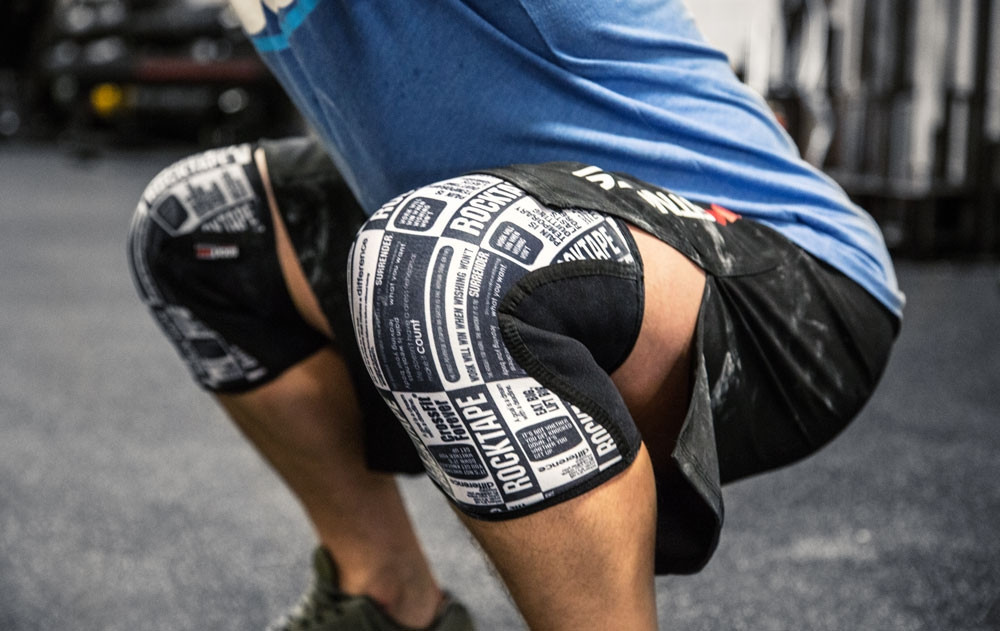
Knee pain, injuries and disorders
What causes knee pain?
- Arthritis is the most common cause of knee pain, because it has several forms. There are three types of arthritis which affects knees – osteoarthritis, rheumatoid arthritis and post-traumatic arthritis. Common symptoms of these forms of arthritis are sudden of gradually developing knee pain, swelling, stiffness, weakness and weather-sensitive degrees of knee pain.
- Ligament injuries. Human knee consists of four different types of ligaments – ACL, PCL, MCL, LCL, but all of them can be damaged in various ways, but always through forceful impacts such as direct blows, twists or hyper-extension. Injuries of ligaments cause symptoms as intensive pain, swelling, stiffness, instability and difficulty in walking.
- Meniscus tear (cartilage tear) causes symptoms such as swelling, sharp pain in the center or sides of the knee, stiffness, locking, popping or catching and inability to straighten the knee.
- Patellar tendonitis (tendinitis or jumper’s knee) is an inflammation or injury of the patellar tendon because of repetitive movements. It is known with such symptoms as pain during straightening and bending the leg, swelling, tenderness and restrictive movement.
- Chondromalacia patellae (patellofemoral syndrome or runner’s knee) is disease which is known with symptoms such as pain on the front of the knee, pain during bending the knee, swelling, grinding or popping sensation.
- Dislocating kneecap (patellar dislocation) is caused by sudden twist of leg or direct blow, causing dislocation of patella, intensive pain and swelling.
- Baker’s cyst (popliteal cyst) is a pocket of fluid, forming a lump behind the knee. Excess fluid is caused by diseases such as osteoarthritis or rheumatoid arthritis or injuries, causing stiffness, swelling and slight pain behind the knee.
- Bursitis (housemaid’s knee) is an inflammation or irritation of the bursa, caused by age, diseases, infections, abnormal bones or joints, medications, repetitive impacts, overuse, poor warm-up and stretching, incorrect postures or sudden injuries. Bursitis is known with symptoms as immobility and gradual or sudden pain.
- Plica syndrome (synovial plica syndrome) is an irritation of the membrane of knee joint caused by overuse or direct blow, causing symptoms as pain and tenderness.
- Osgood-Schlatter disease is widespread among youngsters who take part in high impact sports. Symptoms of this disease are knee pain, tenderness, swelling, tightness and limping.
- Osteochondritis dissecans is connected with bone dying due lack of blood flow, causing symptoms as painful or sore knee joint, sense of grinding or locking, stiffness and limping after inactivity.
- Gout (podagra) is abnormal metabolism of uric acid which forms excess uric acid in blood and thus tissues. This disease causes symptoms as intensive joint pain, inflammation and redness, discomfort and restricted movement.
- Iliotibial band syndrome syndrome is connected with ligament rubbing against the outer surface of the femur, causing irritation and pain.
- Hip or foot pain which often results in incorrect gait, puts stress on knee joint, causing pain.
- Bone chips occurs when fragments of cartilage or bone break off and stuck in the joint, causing severe pain, swelling and sometimes immobility.
- Bleeding in the knee joint (hemarthosis) affects blood vessels around knee ligaments, causing stiffness, warmth, swelling and bruises.
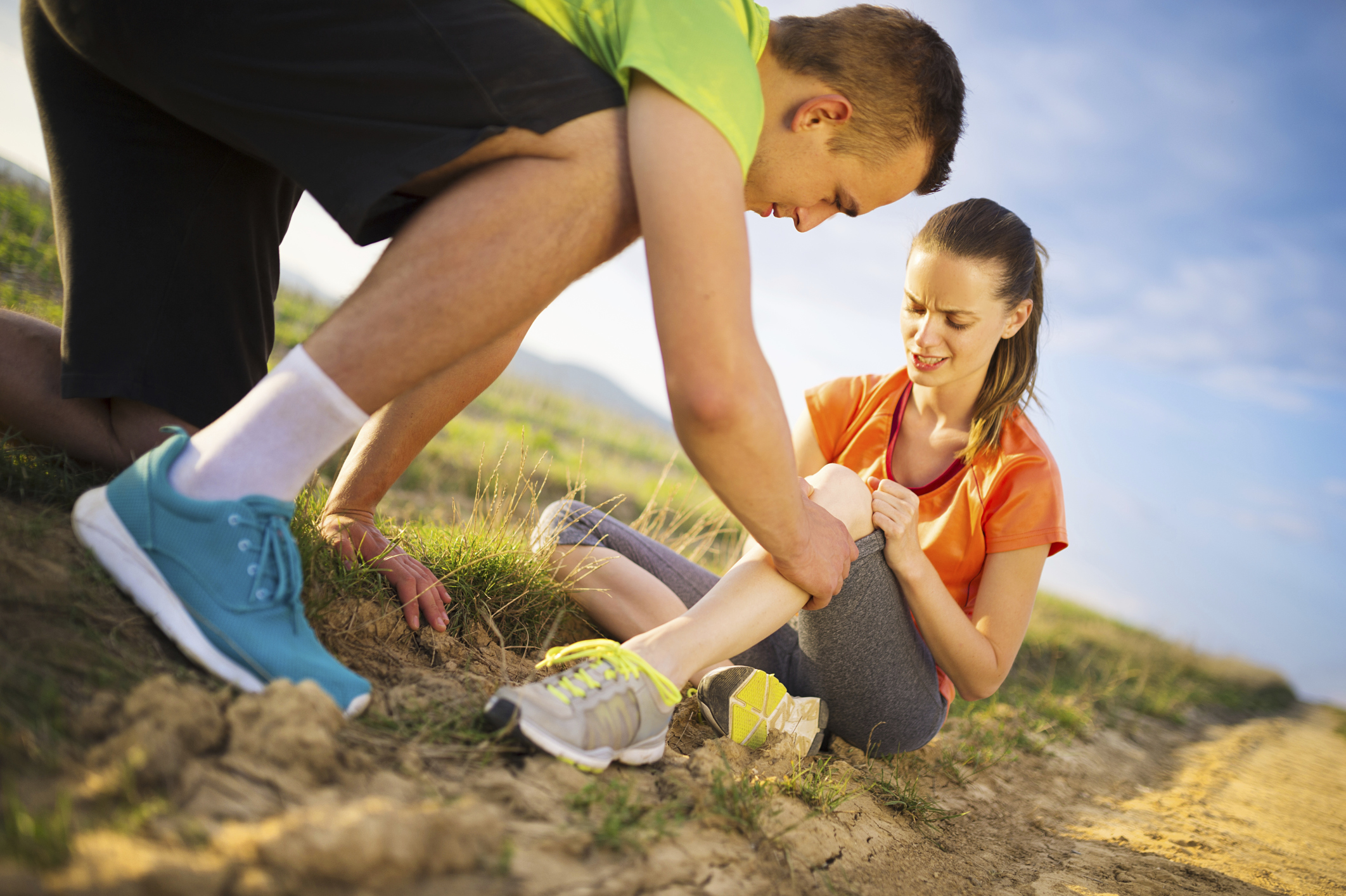
Osgood-Schlatter Disease
Although the name of this injury sounds scary and serious an Osgood – Schlatter disease or commonly referred to as OSD is a common injury among kids and teenagers that is caused by them either growing too fast or overusing their knees. Many adolescents experience growth spurts during their early teen years which means that their bones and muscles suddenly start to grow really fast giving a shock to their whole body. And because the body isn’t ready for such drastic changes in that short period of time most often the tendons or the things that connect muscles and bones become inflamed causing OSD. But the same can happen form over-usage of the knees, too. If teens do a lot of vigorous physical activities such as sports, dancing or gymnastics they put a lot of stress on their knees and because the bones and muscles in their knees are still growing and maturing that puts a lot of stress on the tendons, too, which can result in inflammation also known as OSD. Thankfully this conditions isn’t that severe and therefore the treatment of it usually is quite simple. The treatment focuses on reducing the swelling of the knee and limiting the pain that the injury is causing. Usually to do that doctor prescribes anti-inflammatory and pain medication and recommends different stretching and strengthening exercises for the knee that will help to recover and regain previous range of motion to the knee quicker.
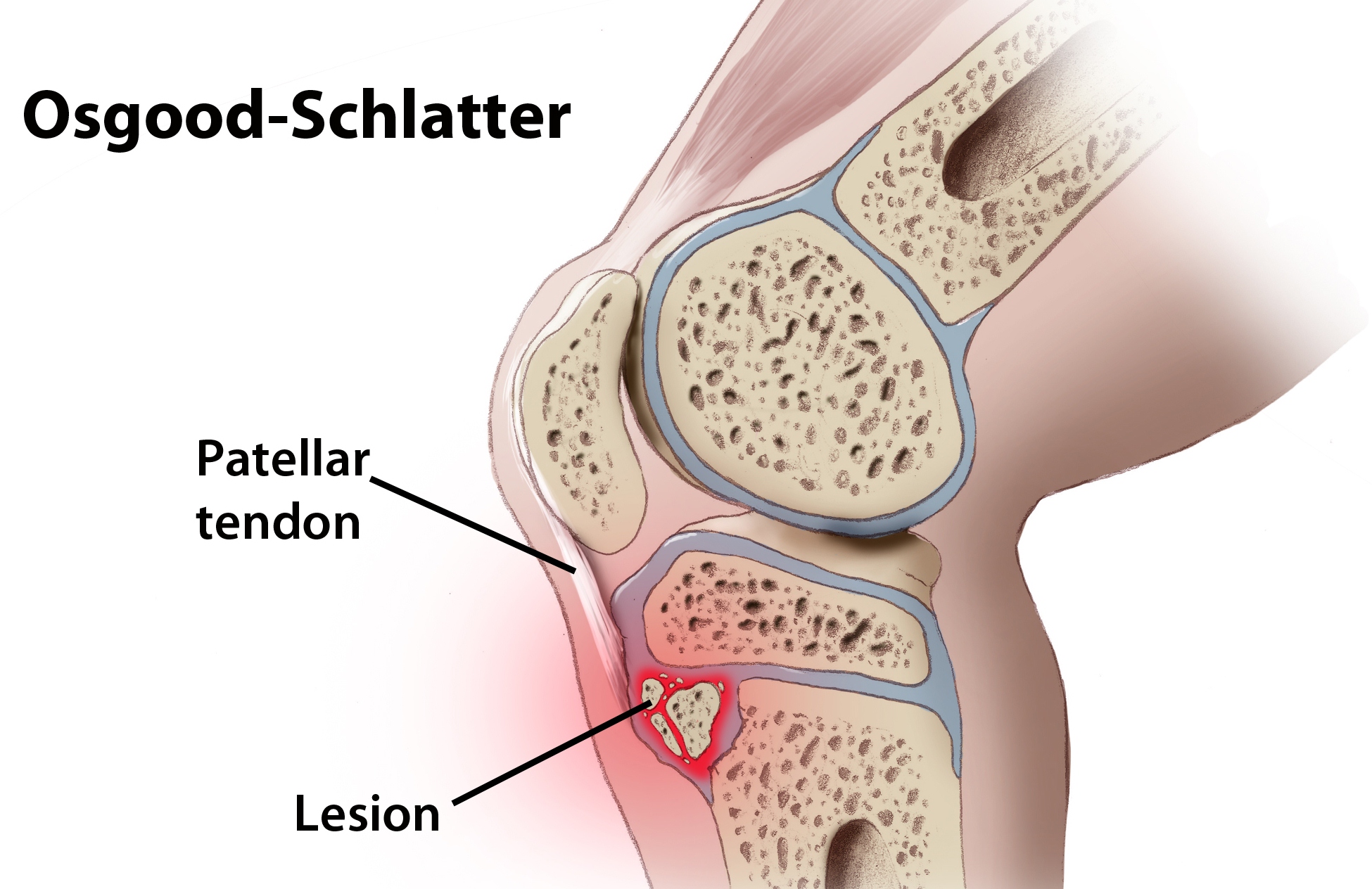
Patellofemoral pain syndrome
Another quite common condition among teenagers, athletes, manual laborers and obese people a like is something called Patellofemoral pain syndrome or PFS for short. If you are experiencing knee pain with activity or even when you are sitting down and the knee hurts mostly in the front part of it then there is a chance that you are suffer from this syndrome. Some of the other symptoms for PFS besides pain include buckling of the knee meaning that there might be moment when you knee suddenly cannot support your weight anymore, as well as popping or so called catching of the knee when your knee seems to catch and create unpleasant sensations. PFS is most commonly caused by overuse of the knee or both of the knees and this overuse can occur not only with a lot of activity but also form after an injury or even from putting excess weight on the knee causing changes in the way the knee cap stands. And because this is such a common condition it can be quickly identified by doctors upon physical exam and only sometimes an X-ray or MRI is needed for confirmation. Once it has been established that it in fact is PFS the doctor usually tell patients to avoid certain activities that can make the condition of you knee worse. On top of that a common practice in cases of PFS is to prescribe anti-inflammatory and pain medication to help patient deal with the injury as well as recommend RICE (Rest, Ice, Compress, Elevate) method so that the conditions heals as quickly as possible.
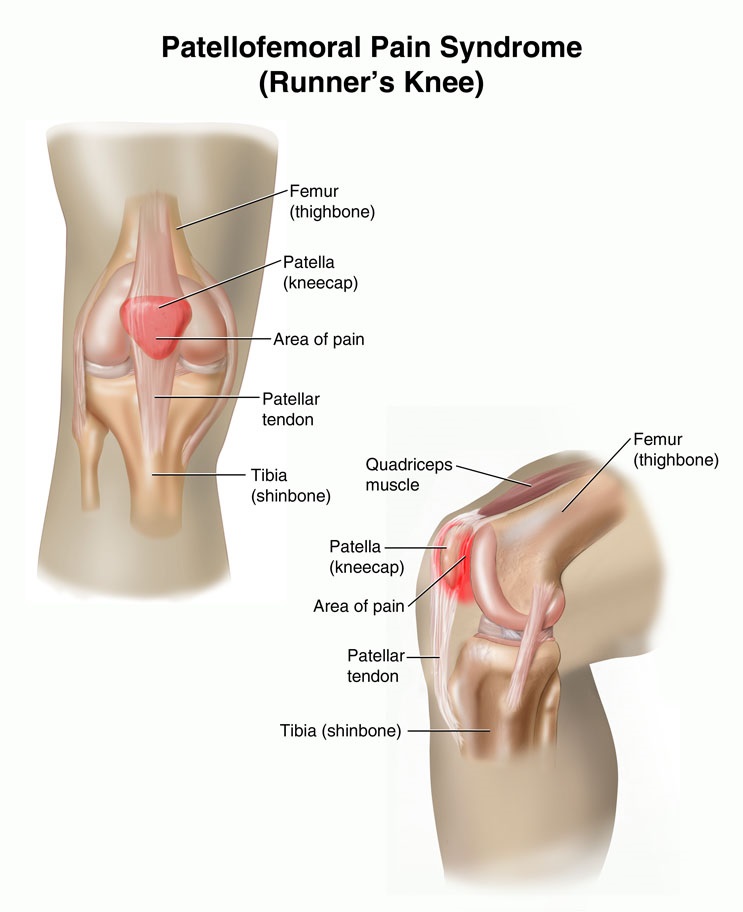
Arthritis
I can confidently say that most of us will experience arthritis at least once in our lives because there are about 100 different types of arthritis and about 200 different rheumatic diseases that are very similar to arthritis and therefore are often called that. Arthritis in its core is an inflammation of a joint that takes form of pain, swelling and stiffness of that particular joint. And because there are 360 different joints in a human body any one of them can be affected by arthritis. Most common types of arthritis that affects the knees are:
- Osteoarthritis that is nicknamed the wear and tear arthritis because this arthritis develop over time as the cartilage or the material that covers the ends of our bones and aids with shock abortion and friction breaks down leaving the bones without cushioning or lubrication and us in pain. This arthritis is treated by medication and different strengthening exercises.
- Rheumatoid arthritis that is an inflamed joint which is caused by an autoimmune disease. And autoimmune disease means that your own immune system is attacking your body in this case your knees causing the inflammation – pain, lumps on the knees, swelling and so on. And this arthritis, too, is treated by specific medication and sometimes even steroids that help manage stress and pain.
- Psoriatic arthritis which also is an arthritis that develops from an autoimmune disease called psoriasis or PA that causes your immune system to attack you own cells and tissues causing the inflammation. The tell tell signs of this type of arthritis are the usual arthritis symptoms of pain, swelling and stiffness accompanied by red, raised skin patches on top of the skin that tend to scale. Because this is a very serious type of arthritis you should go to your doctor as soon as you suspect this arthritis because the longer you will let the disease to break down your cells and tissues the bigger damage it will cause. The treatment for this conditions includes specific medication to control the symptoms, help with the inflammation and treat the autoimmune disease.
- Traumatic arthritis or post-traumatic arthritis that occurs only in knees that have experienced any severity of trauma from a harder fall up to a break. The symptoms of this arthritis are not only pain and swelling but also accumulation of fluid in your knee and limited motion of the joint. If traumatic arthritis has developed then anti-inflammatory medication is prescribed to lessen the effect of the arthritis as well as low impact exercise is recommended to strengthen the muscles around the bad joint but unfortunately it is not uncommon for people with this type of arthritis needing surgery of some type.
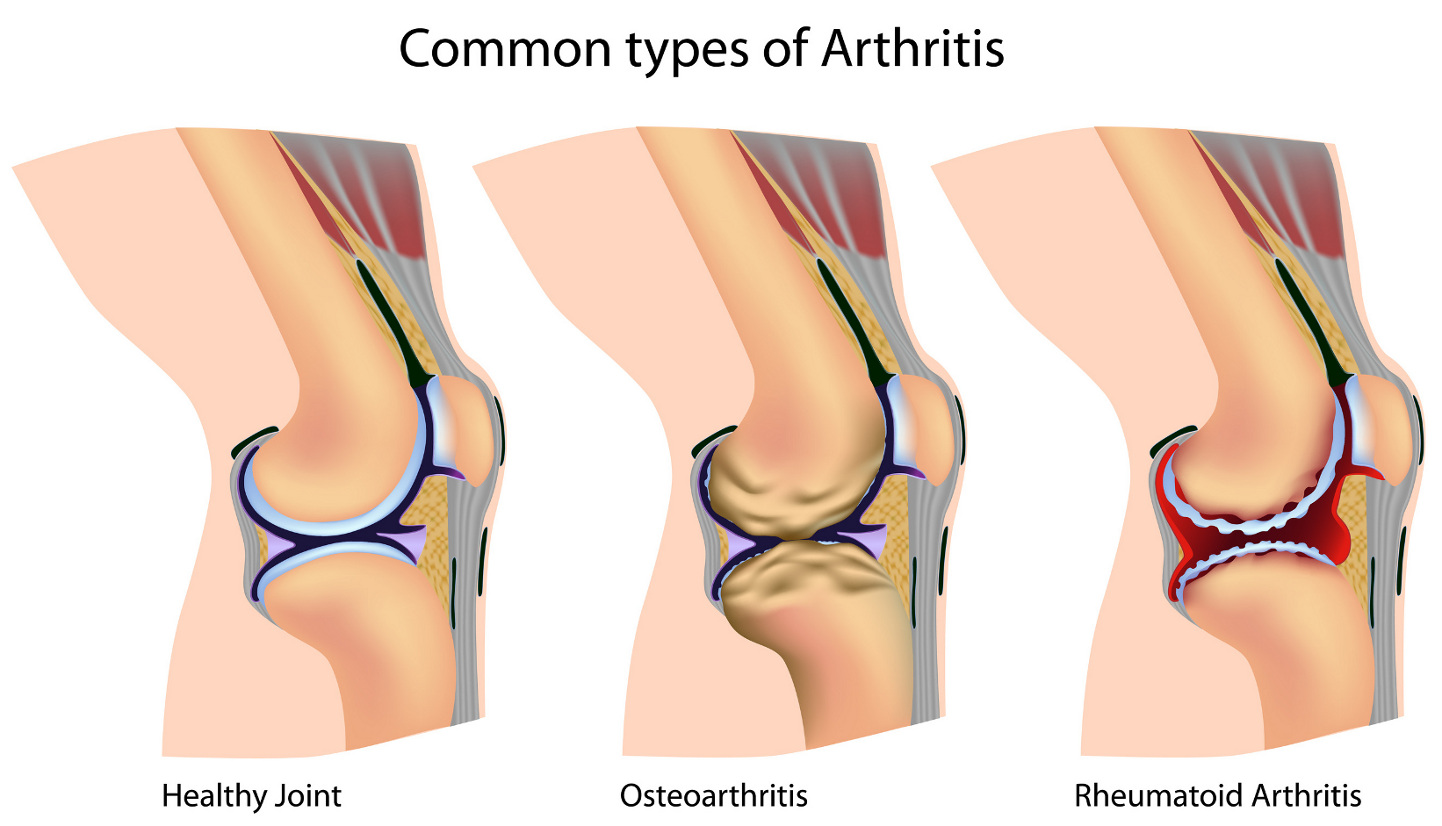
Knee health
Knee structure
The knee is the largest and the most complex joint in the human body – it consists of bones, cartilages, menisci, ligaments, tendons, muscles, joint capsule, bursae and infrapatellar fat pad, connecting the tight bone (femur) with the shin bone (tibia).
The knee joint consists of four bones – femur provides possibility of walking and jumping, tibia bears the load, fibula ensures surface for shin muscles to attached to, patella covers and thus protects the anterior surface of the knee joint.
Each of bones is covered with cartilage which decreases the friction forces between bones during their movements.
Each knee joint has two menisci, namely, medial and lateral menisci which ensures shock absorbing between the femur and the tibia, correcting weight distribution between these two bones.
The knee consists of four types of ligaments – ACL, PCL, MCL, LCL, and all of them provide stability of the knee in a variety of different positions.
Tendons are connecting bones with muscles which are responsible for movement of the knee joint.
The knee joint includes two groups of muscles – hamstrings and quadriceps which are stabilizing and moving the knee joint.
The joint capsule, containing synovial membrane, ensures nourishment to all surrounding knee structures and lubricates the knee joint.
The knee contains several bursae which helps it to move smoothly and infrapatellar fat pad which cushions outer forces on the knee.
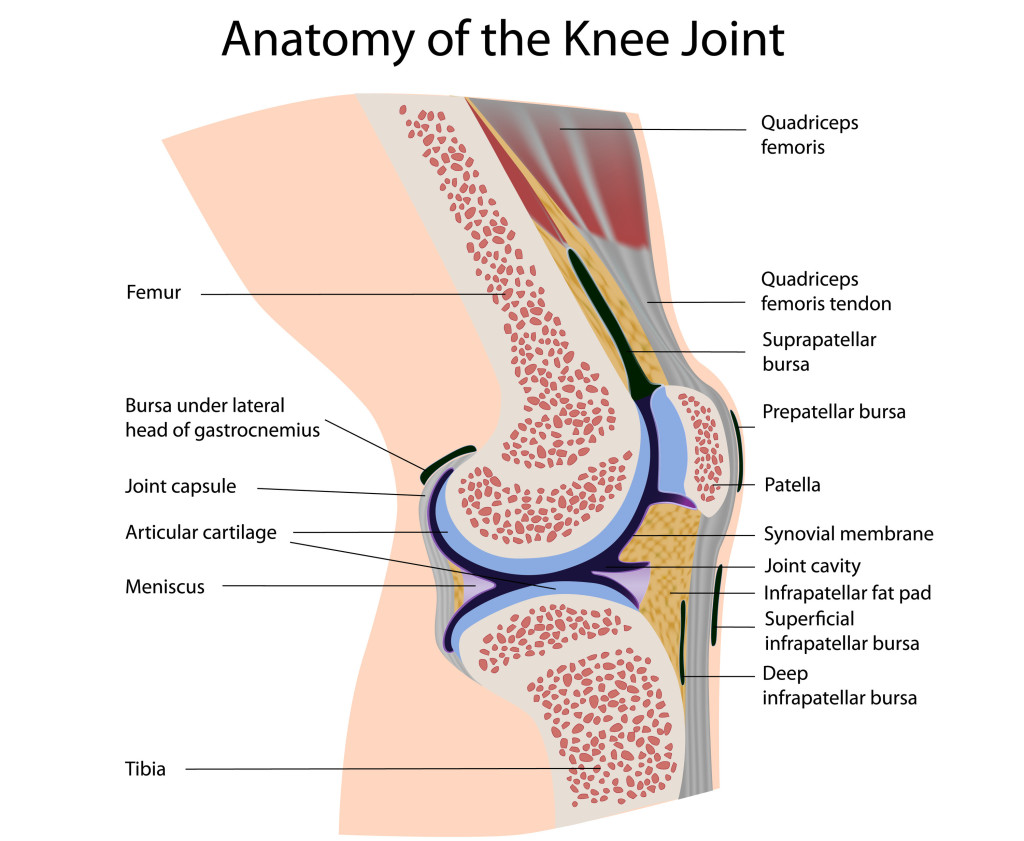
Bone fractures
The bone fracture means broken bone. Fractures of bones usually occur because of physical force on the bone which is stronger than bone, for example, during falls, blows or other traumatic events.
Bone fractures can be open, closed, displaced or non-displaced. There are several types of bone fractures, but the most common of them are greenstick fracture, hairline fracture, complicated fracture, comminuted fracture, avulsion fracture and compression fracture.
Severity of the bone fracture depends on its location and the damage to the bone and surrounding tissue, but recovery time after bone fractures depends on the age and health of patient, and the type and severity of bone fracture.
Symptoms in cases of bone fractures are bruising and swelling, deformity, pain which gets worse during pressure or movement, loss of functions and in cases of open fracture protruding bones from the skin.
The most of bone fractures can be recognized by examination of injured knee and by taking some x-rays, but, of course, there are some more complicated cases when taking of x-rays cannot show any fractures. In such cases doctor performs other tests, for example, magnetic resonance imaging (MRI), computed tomography scan (CT) or bone scan. It should be mentioned, that after diagnosis of bone fracture, patient needs other tests too, for example, MRI, CT or angiogram to find out whether surrounding tissues are injured.

Knee examination tests
The knee examination usually starts with asking about patients history of injuries and symptoms. It should be mentioned, that it is very important to know all of previous injuries, not only those who are connected with knee, because it helps to diagnose and develop the treatment plan.
When these conditions are clear, patient is asked to sit or lie down. After that doctor starts physical examination of the knee, comparing injured knee with the healthy one.
First of all doctor assesses patient’s knee for swelling, redness, deformity or any other changes.
After observation doctor performs palpation, feeling swelling, tenderness, blood flow, temperature and other altered sensations of injured knee.
After palpation doctor evaluates knee’s range of motion, performing active and passive tests.
To evaluate condition of all ligaments, following tests are performed – valgus / varus tests, posterior drawer test, Lachman test, pivot shift test, McMurray test and arthrometric test.
Mentioned tests are not the only option for knee examination – there are few other possibilities for knee examination, for example, magnetic resonance imaging, x-rays, arthroscopy and arthrocentesis which allow to see most of knee injuries and disorders without performing physical examination. These procedures are appropriate in cases when patient feels severe pain and tenderness, making physical examination of knee impossible.
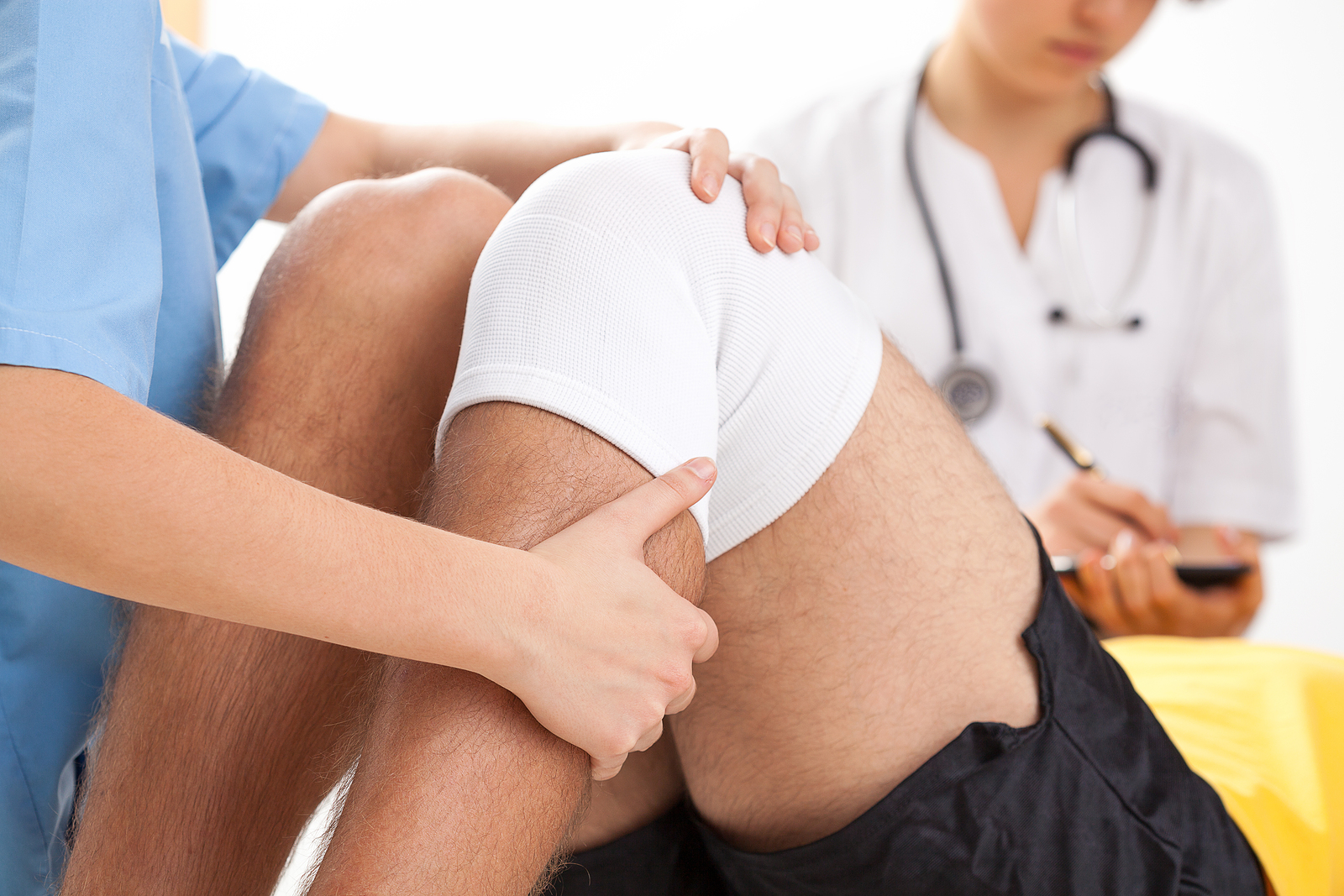
Be safe
How to prevent knee pain
There are a lot of various ways how to prevent knee pain, so you can choose those which are more suitable for your needs and wants. One of ways how to avoid knee pain is sufficient rest of your joints, otherwise you can overuse them, causing different injuries and even diseases. Always remember to get enough sleep which helps to recover your body after physical activities and prepare it to new ones. It is important to maintain a healthy weight, because excess weight puts the stress on knee joints, encouraging breaking down of cartilages. Whenever it is possible, apply ice and / or heat applications on your joints which help to reduce fatigue and swelling. Always warm-up and stretch your muscles which surround the knee joint, decreasing the risk of pulls and fatigue. If it is possible, find a low-impact exercises which you enjoy, not severe and intensive sports which are connected with high risk of injuries. If you already have knee pain, provide a physical therapy and take anti-inflammatory medications, but if these activities have no result, consider cortisone injections for treatment of inflammation. It should be mentioned, that in any case of knee pain you need to talk with your doctor to develop the best treatment plan.
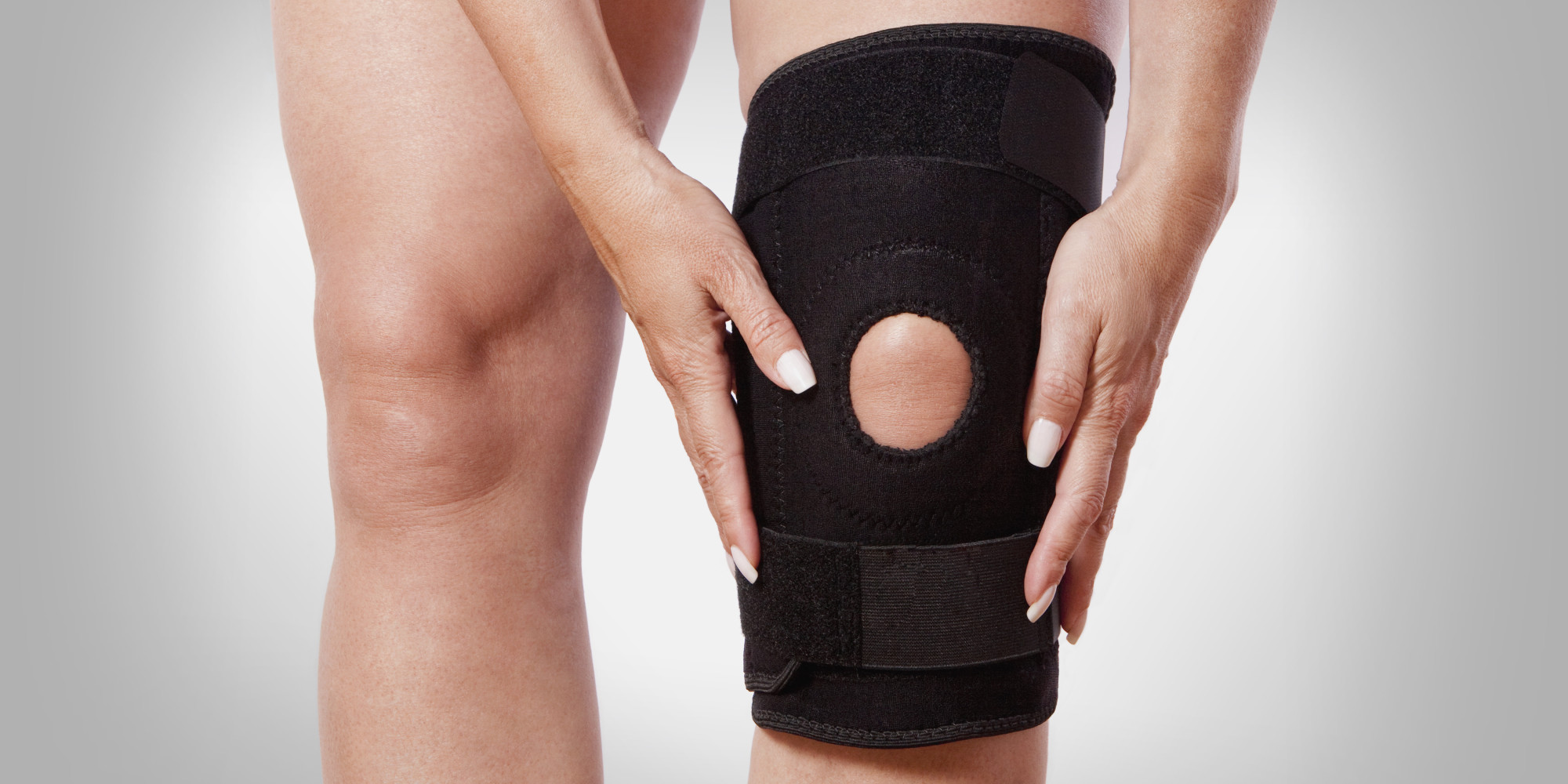
Vitamins and supplements for knee health
Different knee conditions and injuries are very common because knees are one of the joints that have to bear the most weight. To prevent injury and to lessen the effects of different physical actions it is recommended to wear knee pads of different types. But to help with the overall health of your knees there also are different supplements and vitamins you can take that will strengthen your knees and you will have to worry about them less. Many runners and athletes swear by two supplements – glucosamine and chondroitin. Glucosamine is believed to help slow down the deterioration of the cartilages in our knees that let us move our knees without any pain and discomfort whereas chondroitin is said to help with knee pain and even knee inflammation which is why it is sometimes prescribed as part of treatment got osteoarthritis. Then there also is a supplement called S- Adenosylmethionine or SAM-e for short which is used as arthritis treatment but also can be used as supplement to prevent arthritis. Bromelain too is another supplement that can help with swollen and painful knees especially if you have some type of arthritis because it contains enzymes that help our body fight infection. Just be aware that bromelain is very potion supplement and therefore can cause strong reaction to the supplement. And finally there are 3 more natural supplements or I should say vitamins that are great for knee health too. They are Omega-3 Fatty Acids that are found in fish oil and helps with joint inflammation, Vitamin D that helps our bodies better absorb important nutrients from the food that way helping with the health of our bones and muscles as well as of coarse calcium that is the universal supplement that is responsible for the health of our bones and because our knees consist of 4 different bones then calcium in very important to our knee health.
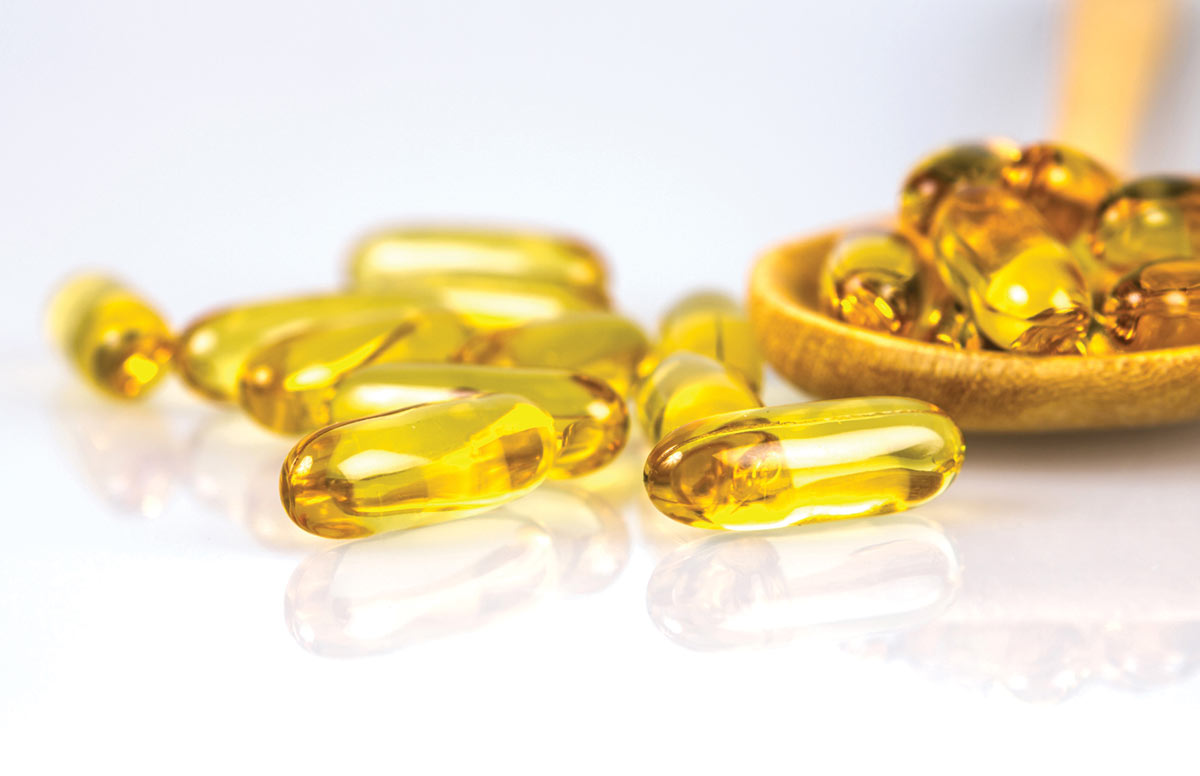
Knee treatments
- RICE therapy which includes rest, ice, compression and elevation. Rest means protection and resting of injured knee, ice means applying of ice or just cold pack right on the injured knee, compression means wrapping of injured knee with elastic bandage or sleeve, but elevation means elevation of injured knee at or above the level of heart.
- Pain medicines such as acetaminophen, ibuprofen and naproxen. Acetaminophen relieves pain and reduces fever, ibuprofen relieves pain and reduces fever and inflammation, but naproxen relieves pain and fever, and reduces swelling and stiffness.
- Physical therapy includes exercise program which strengthens surrounding muscles of the knee, thereby increasing knee joint’s stability, mobility and flexibility. Physical therapy usually includes exercises which strengthens and stretches muscles. Physical therapy sometimes includes passive modalities (ice / heat, elevation etc.), electrical stimulation and examination of feet.
- Cortisone injections, aka steroid injections, into the knee reduces inflammation, swelling and thus pain of knee joints.
- Hyaluronan injections or, in other words, injections of hyaluronic acid into the knee reduces inflammation and arthritis pain, and delays necessity of knee surgery. Considering that hyaluronic acid is great lubricant, these injections improve lubrication and cushioning of the knee joint.
- Knee surgery is done with purpose to correct different knee conditions, for example, to remove an injured meniscus, to replace or repair torn ligament, or fully replace damaged knee joint.
- Arthroscopic surgery, also known as arthroscopy, is performed with special instrument – arthroscope – for diagnosing and treating various knee diseases or disorders such as damaged ligaments, torn meniscus or misaligned kneecap.
- Arthrocentesis or, in other words, joint fluid aspiration is removal of joint fluid (synovial fluid) from joint space, using hollow needle. This procedure helps to get joint fluid for examination, remove excess joint fluid and ease the pressure, swelling and pain.
- ACL repair or ACL reconstruction is a surgery which is performed with purpose to replace damaged ACL with a piece of tendon from patient or donor.

Comparison of knee treatments
- Glucosamine and chondroitin. Glucosamine stimulates the regeneration of cartilage, but chondroitin helps enzymes not to disturb development of cartilage. These supplements enhance movement and reduce pain and symptoms or arthritis, therefore, they are suitable for those who have osteoarthritis pain.
- Gels which contain ibuprofen have painkilling properties, therefore, rubbed directly on the knee joint, they ease the knee pain. Painkilling gels are suitable for those who have osteoarthritis pain.
- Painkilling drugs such as paracetamol, non-steroidal anti-inflammatory drugs and drugs which contain opioids are used in cases of osteoarthritis pain. These painkilling drugs are also used for reduction of other pains and for increase of mobility, therefore, they are suitable for those who suffer from general knee pain and who have tried paracetamol and gels with no effect.
- Corticosteroids reduce inflammation and thus pain, therefore, they are widely used in cases of osteoarthritis. Injections of corticosteroids are suitable for those who suffer from osteoarthritis and who have flare-ups of severe knee pain.
- Hyaluronan injections replace missing material, stimulate production of natural hyaluronan and reduce inflammation, relieving pain and improving functioning of knee joints, therefore, they are suitable for those who have osteoarthritis.
- Knee tapping / bracing is performed with special tape or brace which is wrapped around the knee, enhancing functionality of knee joint, reducing the pressure on inflamed tissues and lessening the knee pain. Knee tapping / bracing is suitable for those who suffer from osteoarthritis or patella femoral syndrome, who have arthritis behind the kneecap or weakness of ligaments or muscles.
- Physiotherapy includes strengthening and stretching of muscles which surround knee joint with purpose to reduce knee pain which is caused by pressure on painful knee joint. Physiotherapy lessens the knee pain through improvement of stability and mobility of the knee joint. Physiotherapy is suitable for everyone who has knee pain.
- Lidocaine patch contains local anaesthetic lidocaine which numbs the nerve endings, blocking knee pain signals to the brain. Usage of these patches reduces osteoarthritis knee pain and maintains effect for up to 12 weeks after treating.
- Acupuncture is a procedure which is based on traditional Chinese medicine and which includes insertion of needles into certain parts of body, thereby stimulating healing processes. Acupuncture results in production of natural painkillers – neurotransmitters and endorphins – within human body, relieving pain, therefore, it is suitable for everyone who has knee pain.
- Magnets, basing on magnetic therapy, enhance healing, ease inflammation and relieve pain, therefore, they can be used by everyone who has knee pain.
- Creams which are intended for pain relief are made of various fatty acids which can help to reduce an inflammation and thus pain. These creams can also cushion joints by lubricating their cell membranes. Such creams improve functionality, strength and balance, and relieve pain of arthritis, therefore, they are suitable for those who suffer from osteoarthritis pain.
- Special shoes and insoles are designed for strengthening of muscles which surround the knee joint and for resolving alignment problems of the knee joint. Wearing of orthopedic shoes and insoles enhances movement of the knee joint and reduces knee pain during movement, because they support and amortize the knee joint, therefore, they are suitable for those who have rheumatoid or osteoarthritis, lower back, knee or foot pain.
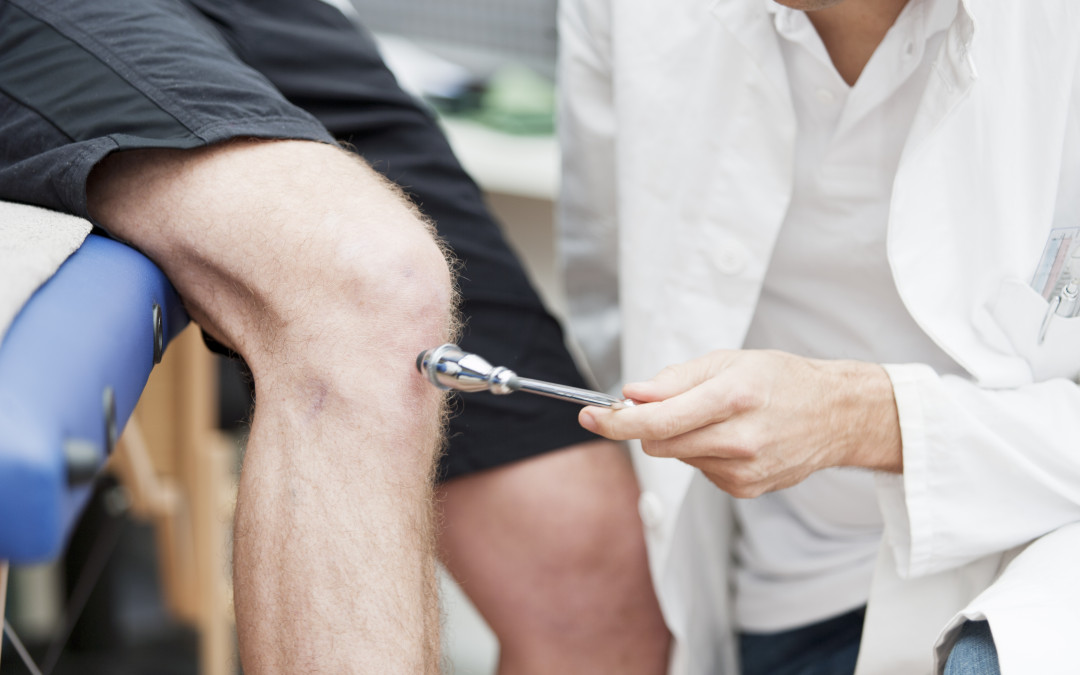
Magnetic knee supports
Magnetic knee supports are devices which have strategically placed magnets in the area of the knee joint, offering a natural and non-invasive pain relief by magnetic fields. Magnetic knee supports are based on magnetic therapy which has been used for thousands of years for treating of pain and swelling. The operational principle of magnets supposed to be iron (within blood cells) attraction to the magnets which results in stimulation of blood circulation.
There are different types of magnetic knee supports – pads, sleeves, braces – but all of them have different strength – certain amount of Gauss from 200 to 20 000 (and even more).
Magnetic knee supports are recommended for sportsmen to prevent knee injuries and for those who suffer from chronic pain and discomfort which are caused by arthritis, tendonitis, post-surgical period or serious knee injuries.
Magnetic knee supports provide benefits such as increased blood flow, reduction of pain and promotion of general well being.
Magnetic therapy is not suitable for people who are children (younger than 7 years), are pregnant, have pacemakers, have haemophilia, are undergoing dialysis, have surgically implanted screws, are allergic to metals, have open wounds, are using high voltage machinery or are working with high voltage cables, are using transdermal drug delivery patches or insulin pumps, have irritation after usage of magnets.

Knee replacement surgery
One of the most common procedures related to knees and knee health is knee replacement surgery because in US alone about 600 thousand of these surgeries are performed every year. The real medical term of this surgery is knee arthroplasty and it is more a procedure than a surgery as many times only spinal anesthesia is administered to the patient. During this procedure the surgeon makes an 8 to 12 inch cut in the front part of the patients’ knee and replaces the patients’ real knee joint with and artificial one that way giving the patient a new joint and a new ability to move his or her knee again. The artificial joint is a prosthesis usually made out of plastic and metal combination so it will last up to 20 years. And it is shaped as an exact replica of your real joint so it would feel as close to your natural real knee joint as possible. Even if knee replacement surgery sounds scary anyone who suffers from worn joints to the point that it is painful to walk and even do the most basic everyday activities should consider it because research shows that 90% of all people who have had this surgery says that they experience significantly less pain after the surgery and they are able to move around again. Even more so only less than 2 percent of all people who have has this surgery have had complications after it and the recovery time after the surgery is only about 6 weeks after which you should have regained full range of motion of your knee.
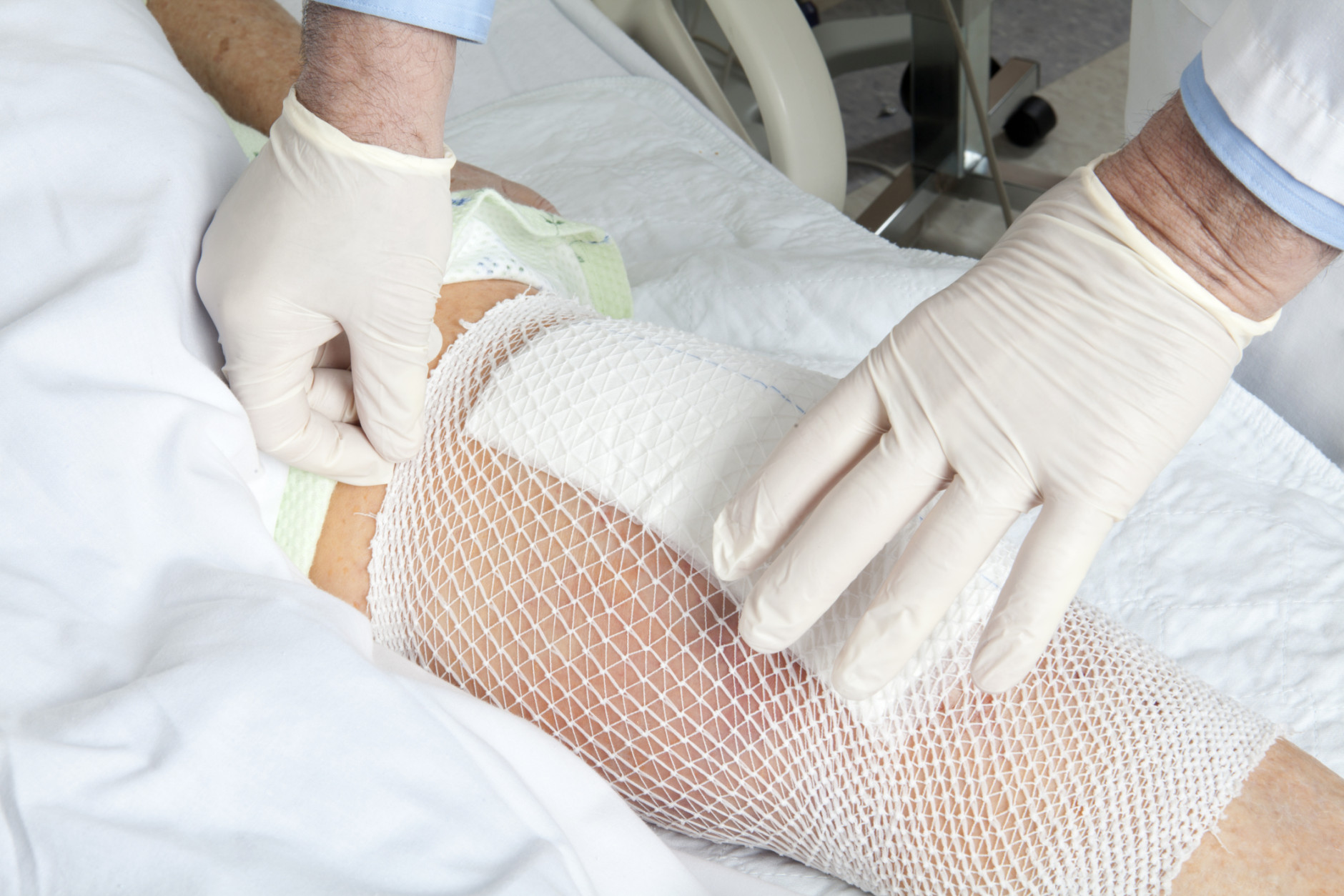
Knee protection guide
Risks of knee injuries and how to prevent them?
It is clear that such knee injuries as bruises, scratches, dislocations, sprains and fractures are caused by different outer impacts, but unfortunately there are a lot of other risks of knee injuries which are not related with outer factors – factors as excess weight, lack of muscle strength or previous injuries increase the risk of having knee problems.
- Excess weight increase the stress on knee joints, accelerating the breakdown of cartilage and increasing the risk of osteoarthritis. To get rid of excess weight you have to live healthy lifestyle which includes balanced diet and regular physical activities.
- Biomechanical problems or, in other words, structural abnormalities of legs such as flat feet or misaligned knees increases the risk of other knee problems. The only way how to resolve problems like these is surgery.
- Lack of muscle strength or flexibility are the most common factors which cause knee injuries, because too weak or too tight muscles do not absorb the stress on knee joints and thus damage them. To decrease influence of these factors everyone have to strengthen and stretch their muscles, doing certain exercises.
- Certain sports such as skiing, basketball and running puts greater stress on knee joints, increasing the risk of knee injuries. To avoid knee injuries during sports you can wear knee pads, sleeves, braces or bands which provide protection and support.
- Previous knee injuries increase the risk of repeated injuries, because each of them weakens knee health and thus their functions. To prevent further damages of previously damages knees you can use knee braces which are specially intended for previously injured knees to avoid further endangerment.
- Wearing of inappropriate footwear encourages unequal fatigue of knee structures, thereby increasing the risk of knee injuries. You should remember this fact not only during sports, but also during everyday activities, so you should always wear appropriate and orthopedic footwear.
- Overdoing results in emotional and physical tiredness, increasing the risk of knee damages, because tired body does not function completely. To avoid such injuries you should always listen to your body and skip trainings when you are exhausted. Also you should avoid sudden increases of intensity or duration of exercises, combine hard training days with easy ones and include warm-up and stretching exercises.
- Being a woman. Women have from 2 to 8 times higher risk of certain knee problems than men, especially ACL tears, because there is connection between monthly hormonal fluctuations in women and knee injuries. All women should do warm-up and stretching exercises, start new exercises programs slowly, wear appropriate and orthopedic footwear and maintain healthy weight.
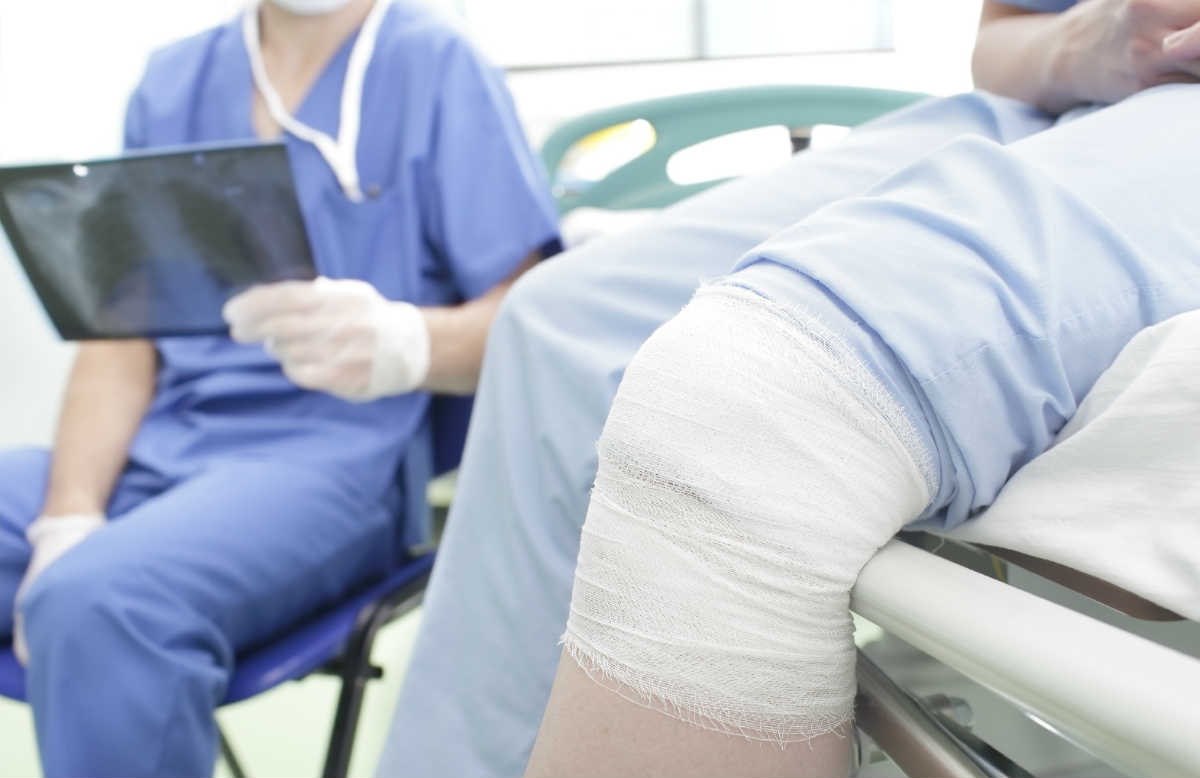
To wear or not to wear pads, braces, sleeves?
There are a lot of different research done to determine if knee pads are as efficient as their manufacturers claim them to be and ultimately if wearing knee pads actually is necessary. And there is no surprise that most of these studies have determined that knee pads are able not only to make the injuries that athletes and others who wear knee pads can sustain by falling down or receiving a blow to their knees less severe but also can lessen the effects physical activity and repeated actions can have on the health of your knees. From Clinical Journal of Sport Medicines’ study in 1995 that determined that that knee guards reduce the force of a kick to your knees by about 40 percent, a study done in 1998 that was published is Sports Medicine Magazine and that says that knees pads can reduce the severity of knee injury and even prevent soft tissue damage and a study done in year 2000 that concluded that even the most commercial knee pads are able to lessen the risk of fractures to more recent studies for example a 2008 sturdy that says that knee braces help enormously after different injuries, a study done in 2011 that that determined that osteoarthritis patients experienced less pain then they were using knee pads and a 2012 study that was published in Journal of Strength and Conditioning Research which concluded that knee pads also help professional athletes who are actively putting stress on their knees on day to day basis. All these studies prove that there isn’t a question of should or shouldn’t you wear knee pads. The question is which type of knee pads will be most suited for your situation.
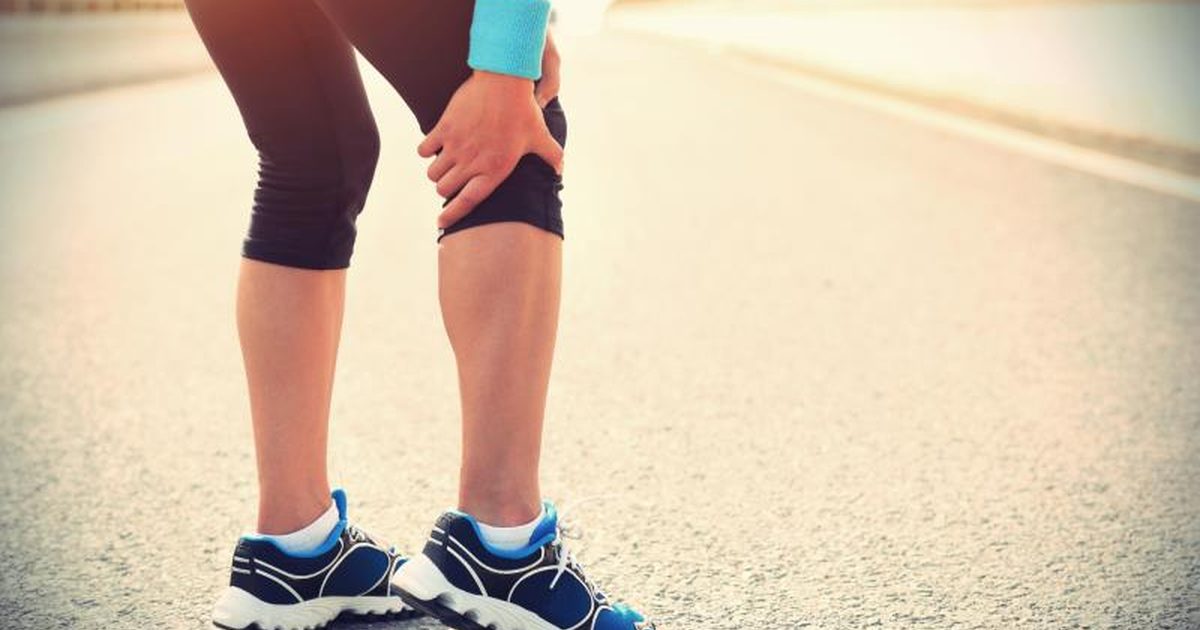
How to choose the right knee guards?
Because there are so many different knee pads and guards out there for different purposes and with different uses you need to know what to look for when you are choosing the right knee guards for you. The first thing you need to figure out before you even start looking for your knee guards is for what specifically you will be using you knee guards, because the knee pad type and style will differ quite drastically depending on if you need knee pads for skateboarding, for basketball or simply to support your knee in everyday activities. Then you also need to consider from what materials you want your knee pads to be made out of. Right now the possibilities are endless from knee pads that are made out of simple cotton to neoprene knee pads to those that has leather or plastic outer layer to provide heavier protection in case of fall or hard blow to the knee. Also you need to consider what type of padding you need in your knee pads and how serious it needs to be. Right now the most popular are gel pads because they are very efficient in absorbing shocks but still let you move around freely. Then there also are pads that are made from foam or even fabric that are a bit less efficient but still might be great for certain activities. And lastly don’t forget to also figure out what style and what size knee guards you want. You should get knee pads that not only are functional but also that look good and fits you just right as these factors ultimately will determine how often you will wear the pads and therefore how much protection they actually will be able to provide you.

Most important features of knee protectors
Because knee pads usually are used as protective measure to prevent injuries and other types of damage from affecting the health of your knees there are quite a few features that any knee protector needs to have. The first obviously being protection which is achieved with the help of cushioning on the inside of the knee pads and the outer layer of the pad that often is clad with more sturdier materials like plastic or leather and help in protection of your knee. Next feature that is utterly important for knee pads to have is also comfort because comfort will be the one feature that will determine how willing you will be to actually wear the knee pads. And along with being comfortable the knee pads also need to allow you to move freely in them (especially knee pads that are meant to be worn while playing basketball, volleyball, football or any other sport), because if they will be restricting your movements and won’t allow you to move around properly then chances are that you won’t want to wear them. Then of course there is a feature called flexibility that also goes hand in hand with comfort as well as free movements because if the knee pads are flexible that means that you can do any activities you want in them from running to crawling and they will still protect your knees as well as they would if you were standing in place. Because knee pads are mostly meant to help you when you are moving around and being active they also need to inhere a feature such as breathability to keep you comfortable even if you are having the most intense football match of your life in them. And finally a feature that sometimes is overlooked is great fit. Many think that knee pads need to be a bit uncomfortable to be efficient but the truth is that if the knee pads fit your knees right then they should be very comfortable because only that will provide that you will be happy to wear them and happy to protect your knees with them.
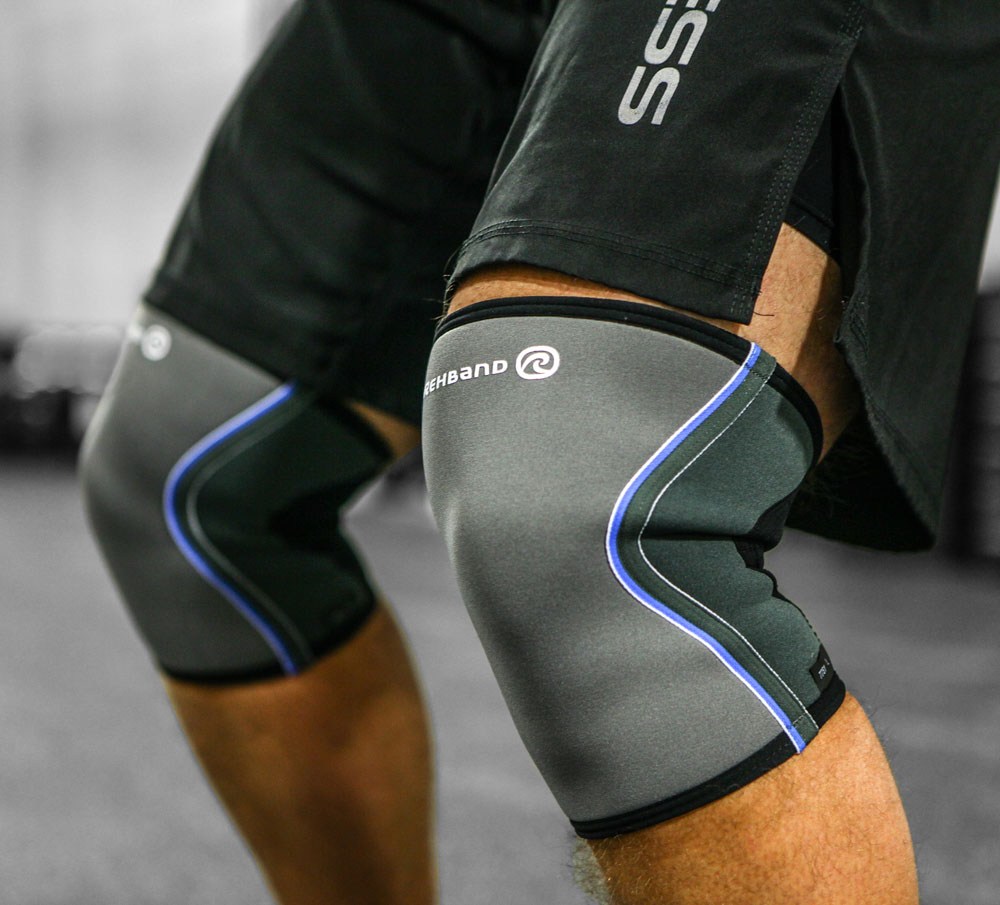
Knee protectors for babies
Most popular knee protectors for babies are knee pads which are intended for knee protection against different knee injuries which can be caused by blows, attrition or other outer impacts during crawling or walking.
Babies get knee injuries quite often, because they are intensively crawling and learning to walk. Babies naturally have higher risk of different injuries, because their skin, tissues and bones are thinner and brittler. Problems start when babies are crawling or walking on hard surfaces such as carpet, tiles, linoleum, laminate, parquet, marble, concrete and other flooring, causing abrasions and bruises. Fortunately, there are great range of knee protectors which are specially designed to keep babies knees safe and comfortable in their first steps of life.
As mentioned before, knee pads are the most used prevention against knee injuries for babies. Baby knee pads may be in various sizes, thickness, design and style. Nowadays there are available not only baby knee pads, but also special clothes with protective inserts such as pants, tights, overalls and other clothing.
Excepting baby knee pads, there are some other advices for prevention of knee injuries during crawling and walking as well. Put a carpet or blanket down on hard surfaces where baby is crawling or walking, dress your baby in clothes which are made of 100% cotton, prevent your baby from crawling and walking on hard surfaces such as gravel, cement or other rough surfaces, and regularly apply some moisturizing and soothing cream on your baby knees.
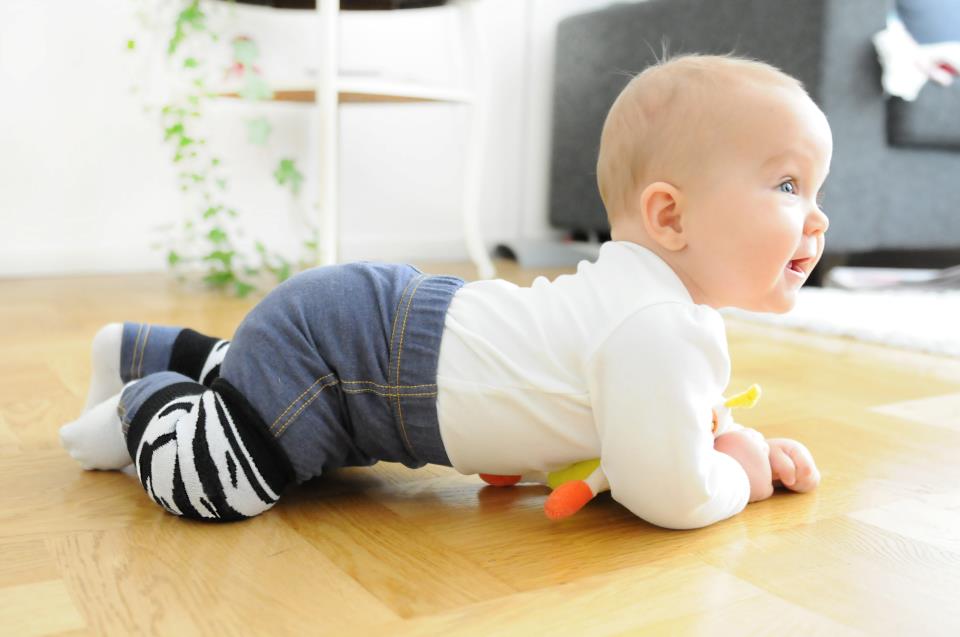
Knee protectors for extreme sports
Many think that those who partake in activities that could be labeled as extreme sports are crazy and not without a reason because extreme sports many times are dangerous and very risky. But even those most reckless tend to think about their health which is why extreme sports athletes of many disciplines love wearing knee as well as elbow protectors because they know that they at least will lessen their injuries and let the recover quicker to continue their dangerous adventures. Knee protectors used in extreme sports usually have three levels of protection. Because these protectors usually have a plastic shell on the outside of them this shell enables the knee pads to protect their wearer from external wounds that could be acquired by falling down for example. The second level of protection for extreme sports knee protectors are shielding against bruises, contusions and other smaller internal damage. This protection usually is achieved by manufacturing the knee protectors with various shock absorption technologies such as the already mentioned hard plastic shell as well as the cushioning on the inside of the knee pads. Lastly the knee pads also need to be strong enough to protect against fractures and breaks or at least make them less severe. Usually the inside padding is the best at protecting from these types of injuries. And some extreme sports knee protectors like those that are used by motocross racers also serve not only as shock absorbers but also they are able to dampen vibrations that your knee gets from the motorcycle to prevent arthritis or other overuse injuries from forming.
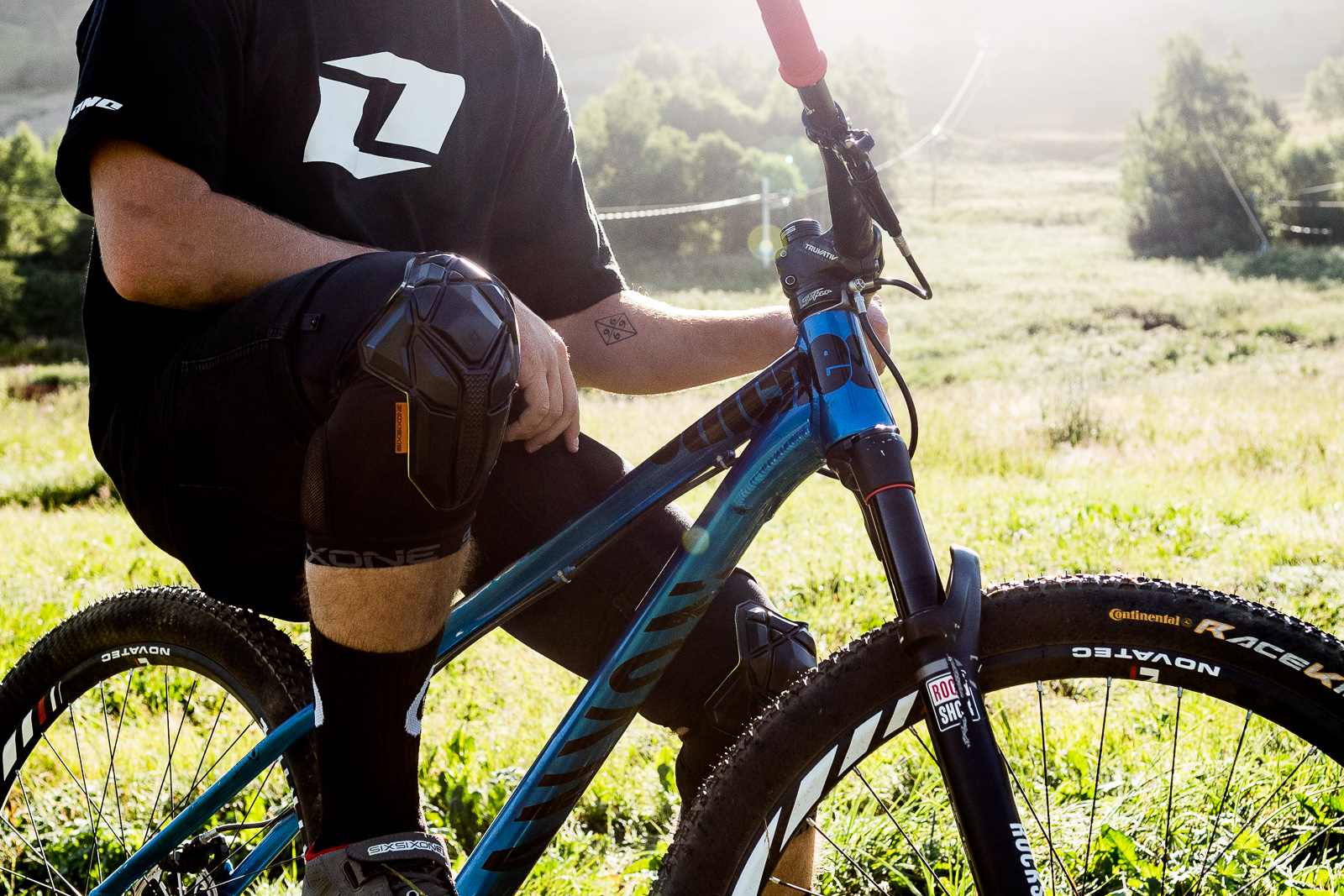
Popular products
DEWALT DG5204 Professional Knee Pads Review
DEWALT DG5204 Professional knee pads are intended for knee protection to avoid different knee injuries during works such as flooring, carpeting, tiling, concreting, construction and gardening. These knee pads are made of ballistic poly material, neoprene, layered gel and polyethylene foam. This product’s dimensions are 9.3” (width) x 14.3” (length) x 3.3” (height), but its weight is 2.3 pounds. Unfortunately these DEWALT knee pads are available only in black color, but they also have some yellow accents which give them stylish look. Considering that these DEWALT professional knee pads are equipped with adjustable straps they are suitable not only for adults, but also for youngsters. This product has many features which difference it from other similar products. For example, they have non-skid caps for stable and safe working on any surfaces without worrying to slip. Considering that these pads are partly made of ballistic poly material which is known as extremely dense fabric and their caps are made of special heavy-duty material, they are defensive and durable, so they are perfectly suitable for working in any situations and conditions. Another feature which ensures this product’s longevity is extra stitching around all its seams. These DEWALT knee pads also have upper tabs for easier repositioning on knees, providing constant stability and comfort. Layered gel which is covered over polyethylene foam padding ensures superior conformation on kneecaps and thus better support and comfort. One more feature which offers comfort and protection for knees in any working position is neoprene inner liner which perfectly surrounds kneecaps. These professional knee pads have slip-buckle fastening system with adjustable straps, so everyone can adjust them for their individual size, ensuring ultimate conformation, stability and thus protection. It should be mentioned, that these DEWALT working pads are equipped with special, heavy-duty clips which ensure extra safety and easy put-on. What is important, this product is machine washable and usually it is sold in pairs.
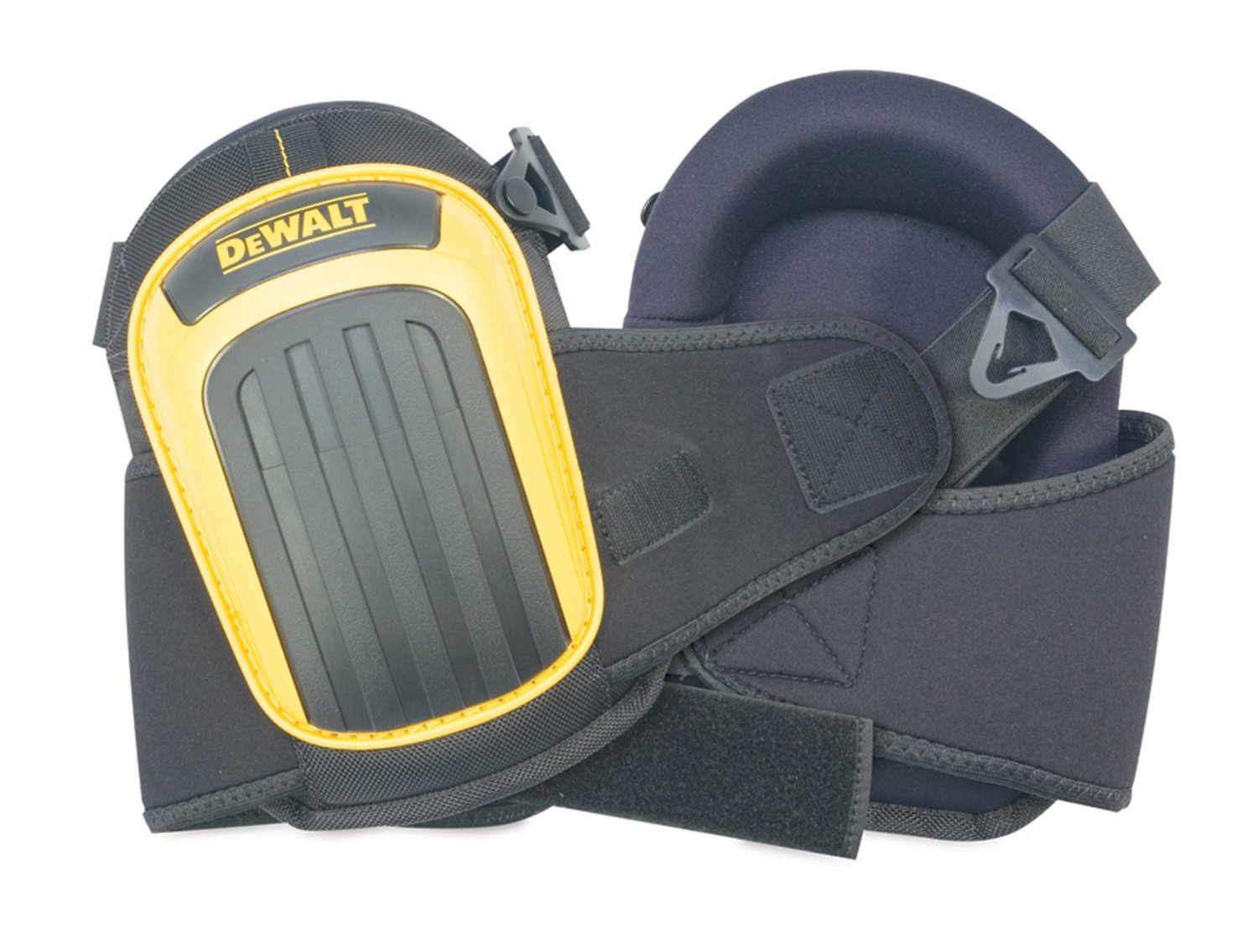
McDavid 6446 Knee Sleeve Review
McDavid 6446 Extended Compression leg sleeve is intended for leg or arm protection during contact sports to prevent their injuries which usually are caused by attrition, blows or other outer impacts which can occur during physical activities. Thanks to this sleeve’s universality (suitability for arms and legs) it is one of the most popular products of McDavid. This sleeve is made of spandex and nylon, and it comes in 17 different colors, so everyone can choose the one, which is the most appropriate to individual needs and wants. What is very important, it is available in 5 various sizes – S, M, L, XL, XXL – so there are no worries about its suitability. Considering that it is offered in 5 different sizes and it is made of elastic material, this sleeve will be suitable both for adults and youngsters. This McDavid extended compression sleeve has many different features, for example, lightness which is provided by lightweight and elastic materials such as spandex and nylon. It should be mentioned, that spandex and nylon are not only lightweight and elastic, but also compressive, therefore, this sleeve provides compression as well. Because of compression muscles stay warm and stable, lessening the loss of energy from unnecessary movement and decreasing the risk of muscle pulls, cramping and fatigue. Thanks to its compressive properties padding constantly stays in its place, ensuring permanent protection. Another advantage of compression is contoured and tight fit which reduces skin irritation and formation of lactic acid in muscle tissues, offering relief of pain and faster recovery. This McDavid sleeve is special because of 3 inches long extensions on top and bottom of it for ultimate protection, stability and comfort. One of this product’s special features is HudraVent hDc moisture management system which provides moisture wicking and heat evaporation, leaving athlete dry and cool all game long, therefore, usage of this McDavid sleeve offers comfortable feeling both in warm and cool environments. Thanks to this special moisture management system, this sleeve’s condition is always constant, therefore, it maintains its functions, enhancing athletic performance. Another special feature of this product is HexPad technology – this technology includes bonding of dozens of individual hexagon of honeycomb type pads into fabrics, forming about 9 mm thick padding on the region of kneecap. Because of individually applied pads, this compression sleeve conforms to the body and constantly moves with it, ensuring continuous protection, flexibility and thus comfort. Thanks to this HexPad technology this McDavid sleeve looks sleek and tight, therefore, it can be worn underneath clothes too. This McDavid Extended Compression leg sleeve can be washed in washing machine and usually it is sold in pairs.
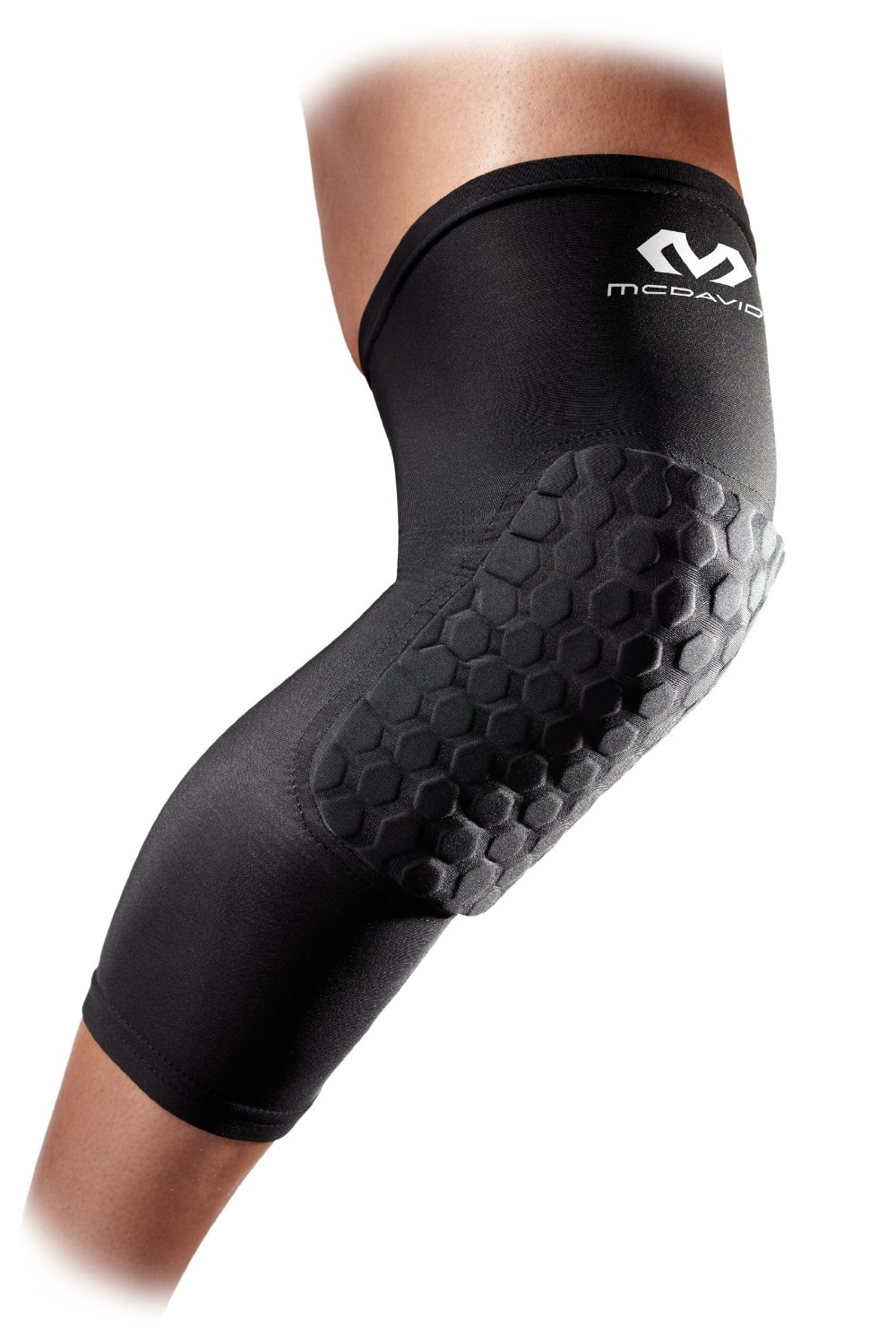
McDavid 6440 Basketball Knee Pad Review
McDavid 6440 HexPad knee pad is universal pad, because it can be used not only as knee pad, but also as elbow or shin pad. This product is made of special and patented materials such as HydraVent hDc and HexPad, but it also includes more ordinary materials such as nylon, elastane and polyethylene foam. This McDavid’s knee pad is meant as knee, elbow or shin protector against different injuries during sports such as football or lacrosse, as well as recovery aid after some injuries to knee, elbow or shin. It is available in six different sizes – XS, S, M, L, XL, XXL – and it comes in 18 different colors which are suitable for any taste. As this McDavid product has six various sizes it is suitable both for adults and youngsters, unless their leg dimensions are appropriate to offered sizes. As mentioned before, this knee pad is made of two special materials – HydraVent hDc and HexPad. HydraVent hDc material is a result of patented process which forms synthetic fabric which is made of hydrophilic (water attracting) molecules, therefore, all moisture from human body is pulled away from the skin and absorbed in this special material, leaving the skin cool and dry. It should be mentioned that when material has absorbed at least one molecule of moisture, it immediately starts drying process, providing its functions for a longer period of time. This HydraVent hDc fabric also ensures muscle warmth, avoiding the risk of sprains and inflammation. HexPad material is a result of patented system which forms fabrics, using hundreds of individually positioned pads. Thanks to independently applied hexagon or honeycomb type pads this McDavid knee pad conforms to the body and constantly moves with it, offering continuous protection and comfort, thereby preventing any joint or muscle injury. Considering that this HexPad fabric is close-fitting and flexible, it is not bulky or restricting. In general, this special fabric makes this pad lightweight, comfortable and breathable. Despite the usage of innovative materials in this McDavid’s product it can be washed in washing machine and usually it is sold in pairs, including two pads.
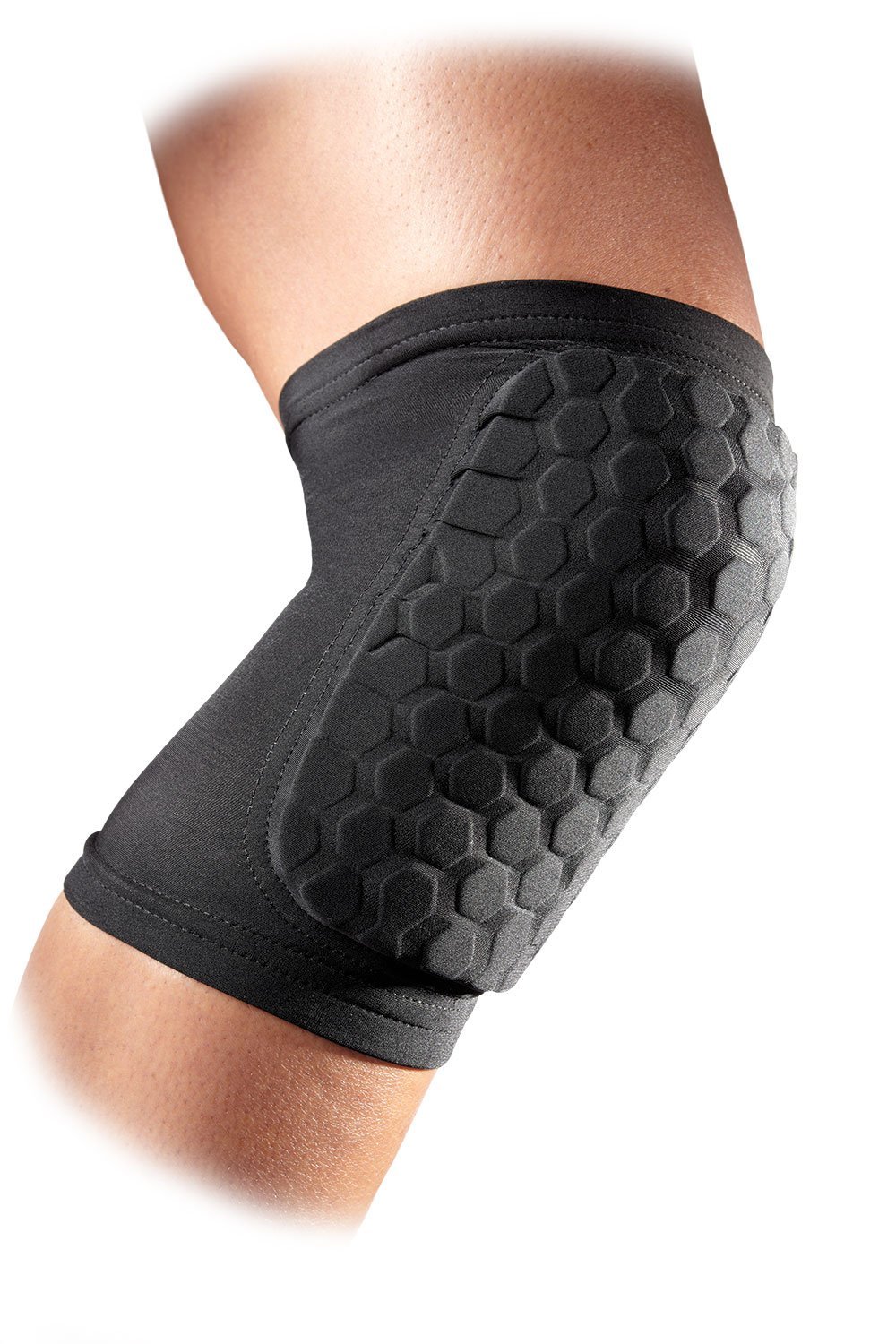
ASICS Ace Low Profile Knee Pads Review
ASICS Ace Low Profile knee pads are intended only for knee protection against various knee injuries during sports such as volleyball, but, of course, they can be used during other physical activities, where knee protection is needed, as well. This product is made by using cotton, rubber and nylon, and its dimensions are 6.3” (length) x 7.6” (width) x 2.1” (height). These ASICS low profile knee pads come in black and white color, so you can choose the one which you like the most. Despite the fact these knee pads are available only in one size they are suitable both for adults and youngsters, unless their knee dimensions are appropriate to offered size. These ASICS Ace Low Profile knee pads has various features. One of their features is low profile which ensures more flexibility, maneuverability and thus comfort. As mentioned before, this product’s length is only 6 inches – as many athletes and manufacturers admit, 6 inches are ideal length for knee pads, because they do not restrict the movement, enhancing athletic performance. Despite their low profile they have dual density cushioning which ensures knee protection against different injuries as good as long knee pads do. Another advantage of this ASICS product is lightness and non-bulky look. These ASICS Ace Low Profile knee pads are made of anti-microbial material which reduces formation of bacteria which usually causes bad odor, therefore, athlete stays fresh and clean all game long despite the intensity of activity. These ASICS knee pads also have strategically placed ventilation zones, so the heat from the body quickly dissipates and allows cool air to flow in, leaving athlete cool and dry during even intensive action. It is very important that this product is machine washable and usually it is sold in pairs, providing protection to both of knees.
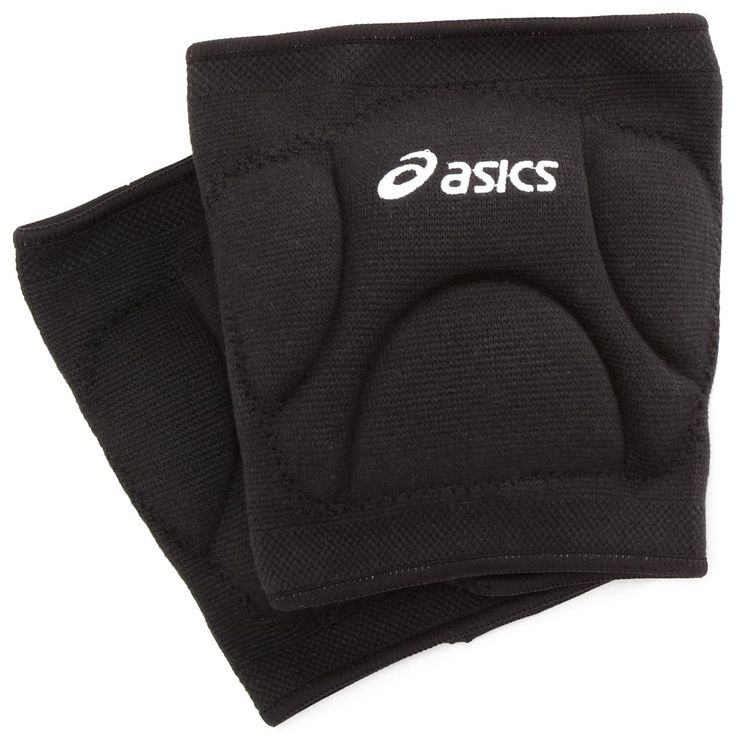
Mongoose BMX Elbow and Knee Pads Review
Mongoose BMX elbow and knee pads are great knee pads that are made to be used as protective measure for your knees and elbows during different activities like BMX, skateboarding, biking and so on. These knee pads are made with shock absorbing padding inside that will be great at preventing serious injury. The outside of the knee and elbow pads are clad with mesh material that lets them fit snug around your knees and elbows so that they are secured to your limbs and won’t move even during the most vigorous of activities. And there are hard shells made from plastic material on the surface of the pads that will protect your knees against any cuts and scrapes that might occur when you fall on asphalt or any other hard surface. One of the greatest features of these particular knee pads is that because they have mesh material on the outside but soft padding on the inside they are easy to use and wear, and they also are very breathable so they won’t collect sweat and make it uncomfortable to wear them. But the Velcro closure adds simplicity and lets you fit the pads to your arms and legs so that they are tight but not restricting letting you move freely and enabling you to play sports, run or do any other activities with them on. The Mangoose pads are available in black color with orange accents that make them more interesting and add style element to them. And they are suitable for anybody who wants to try their hand at extreme sports or who wants so push the limits and learn new tricks to wow the world but don’t want to do it for the cost of injured knees and elbows because they provide excellent protection from injuries common in these type of activities while still being convenient for anybody who wants to wear them.
